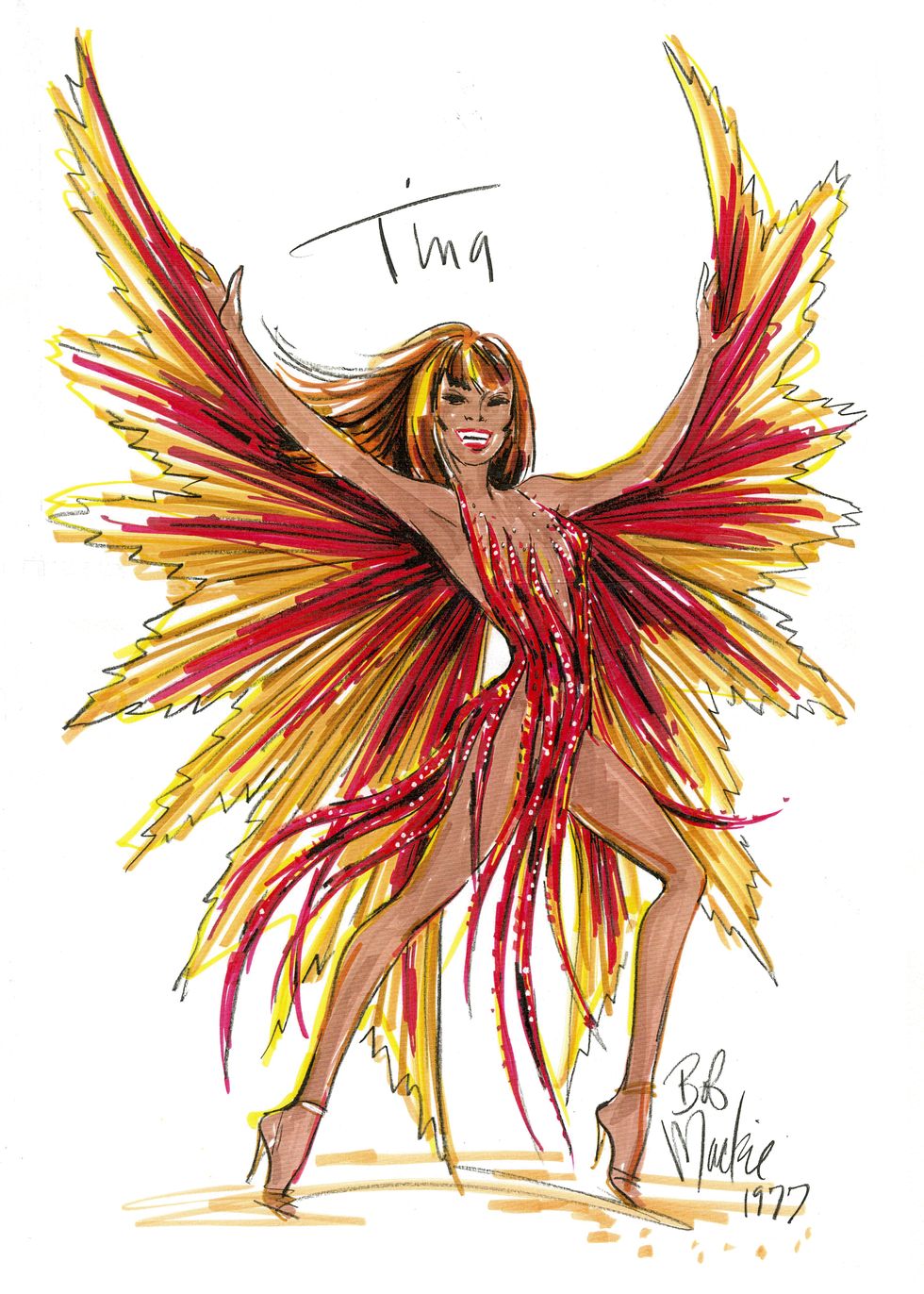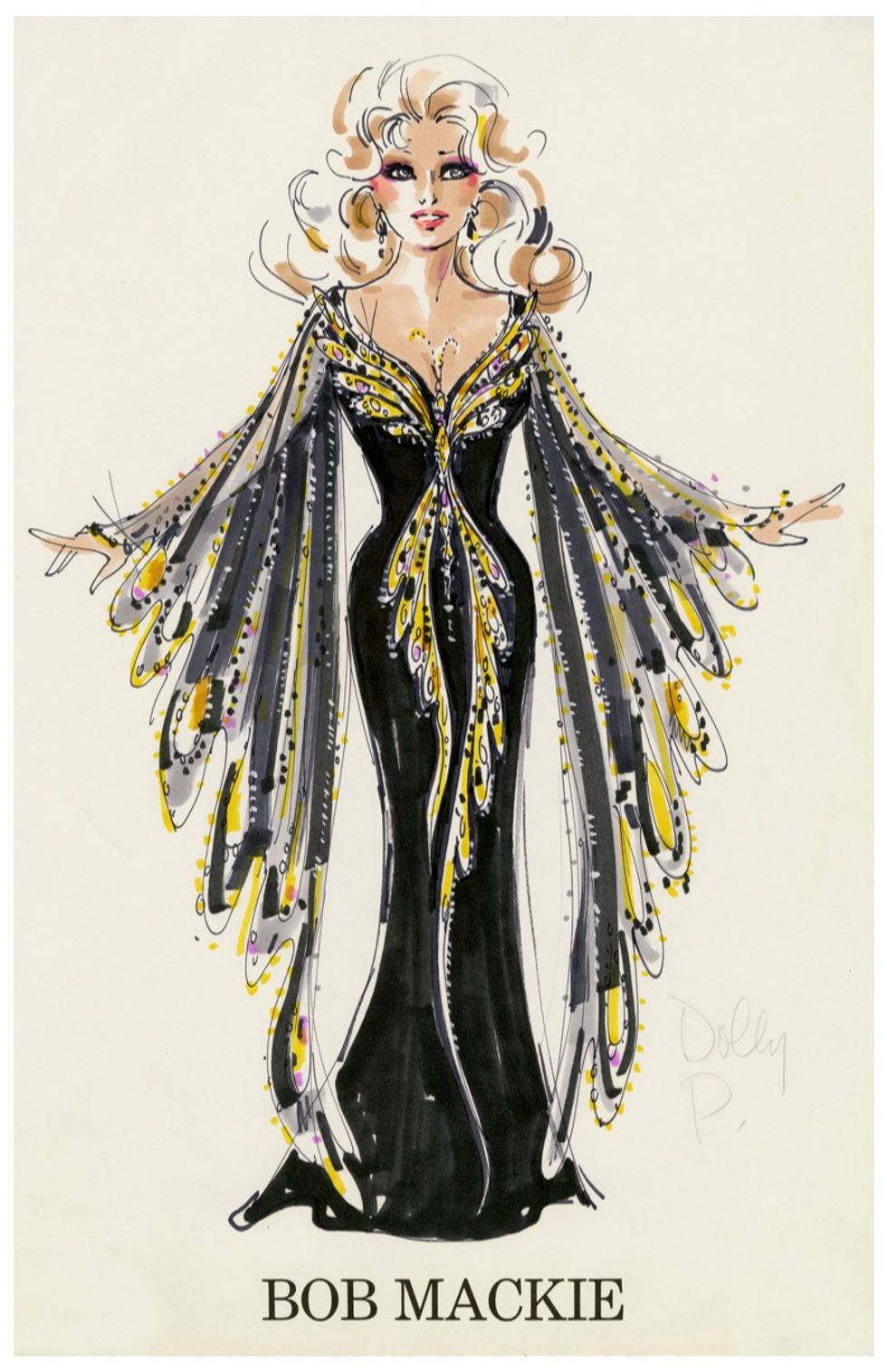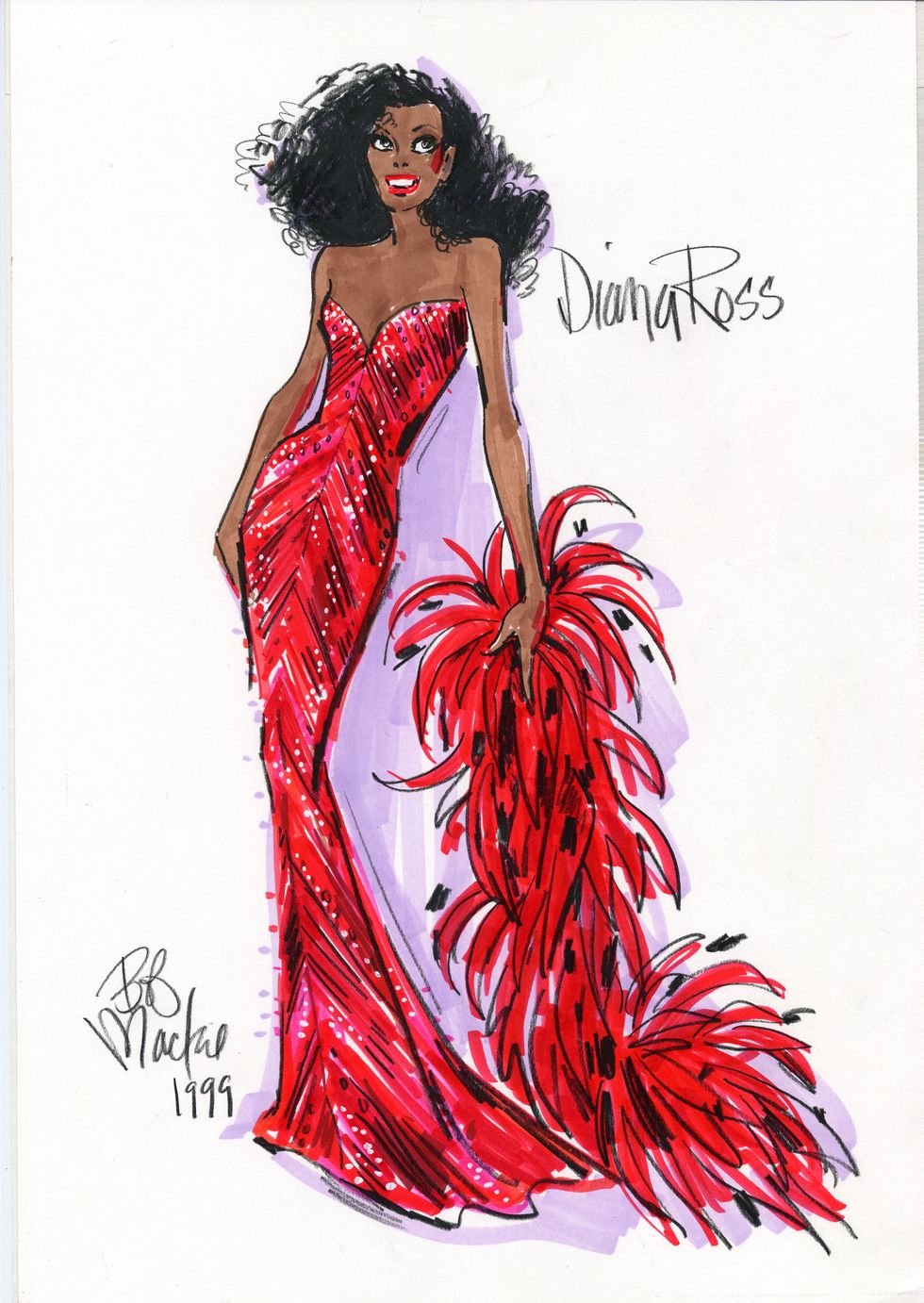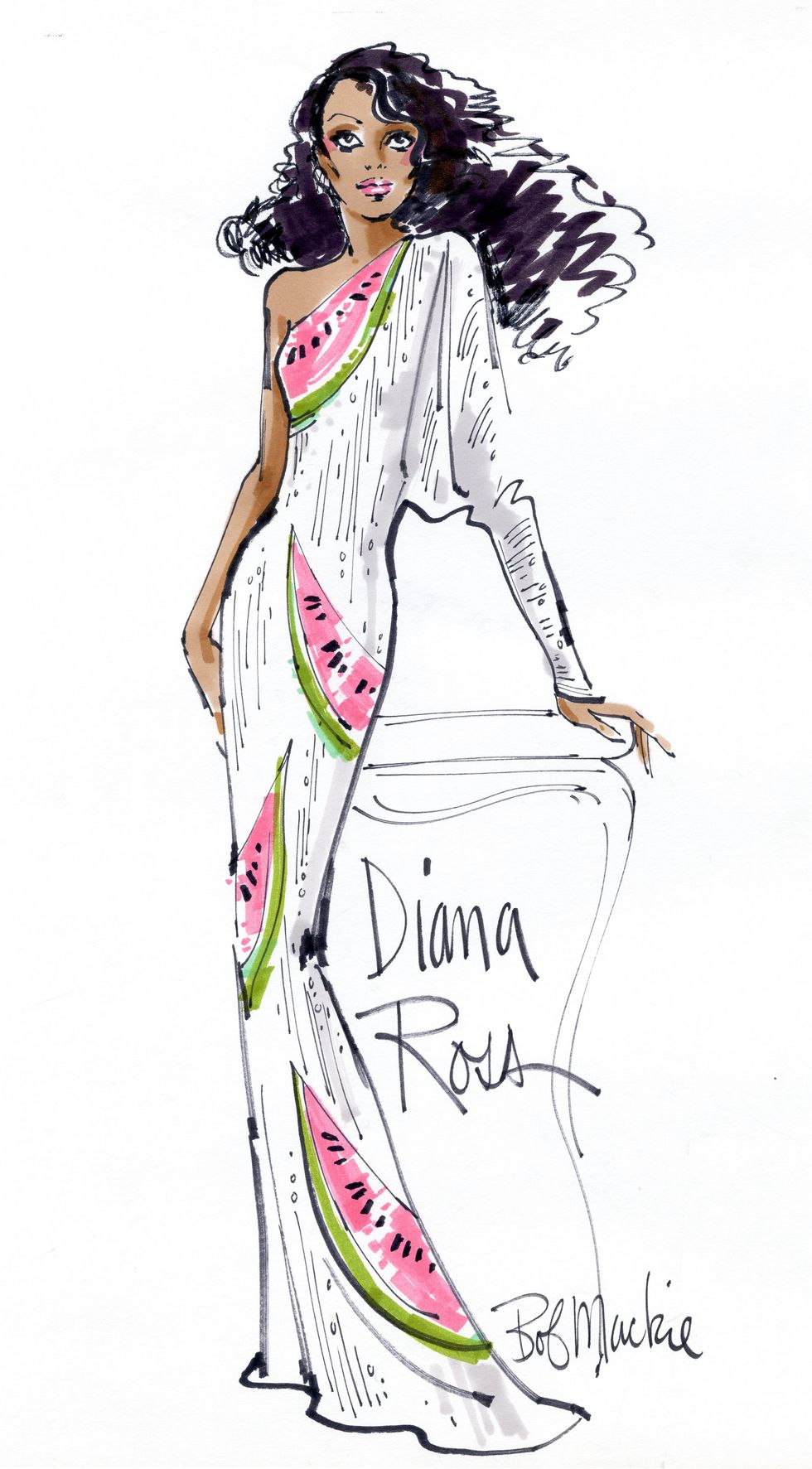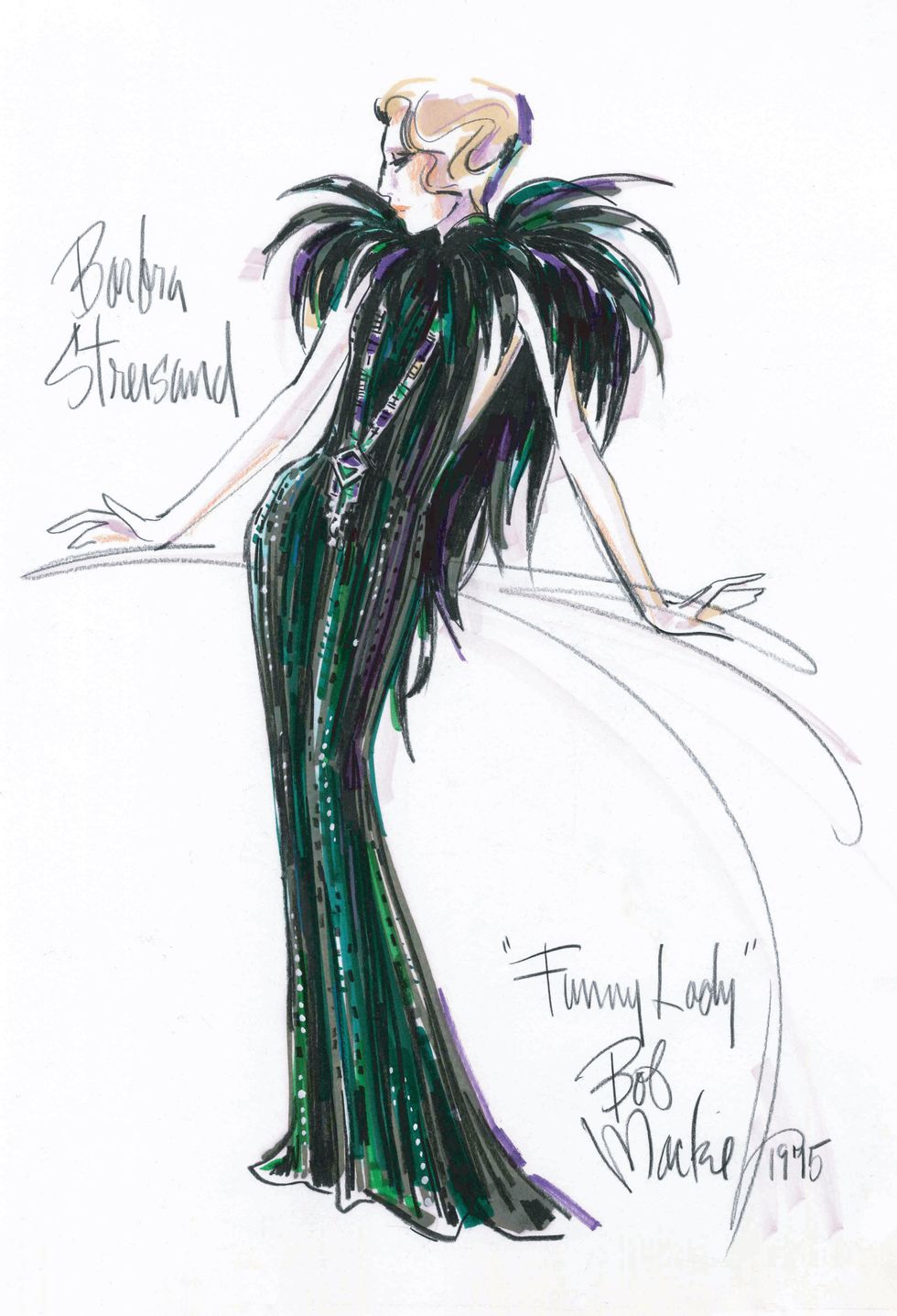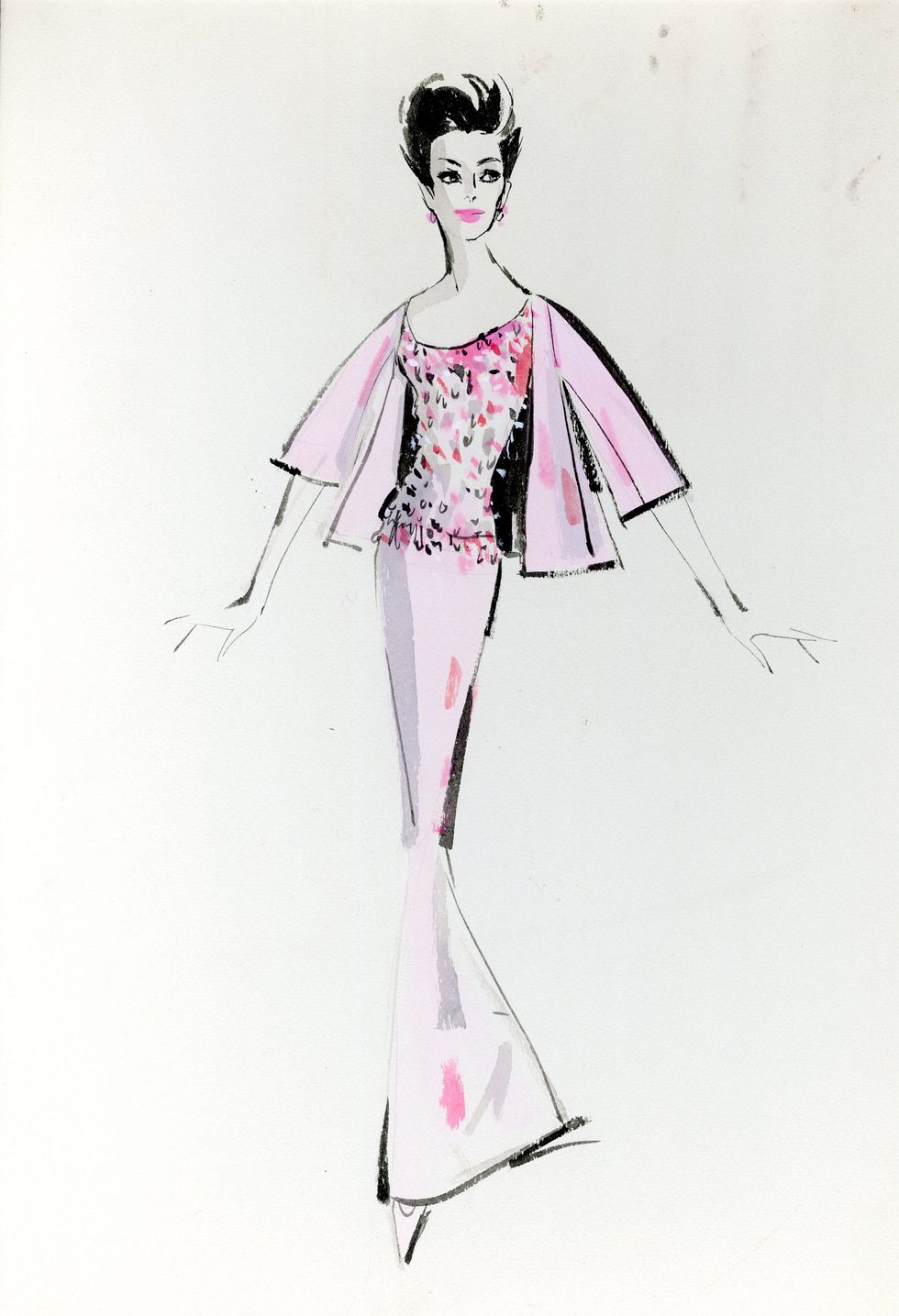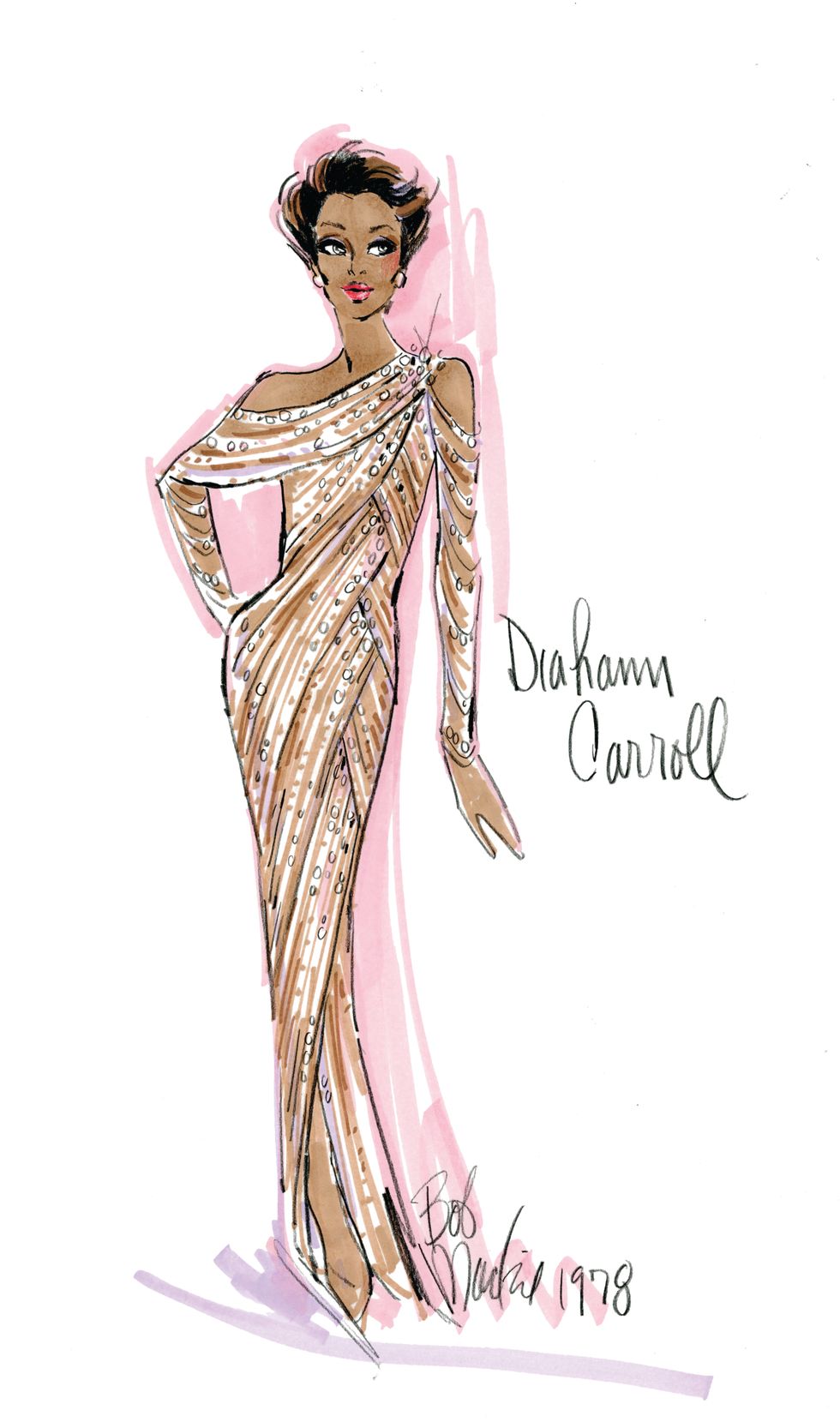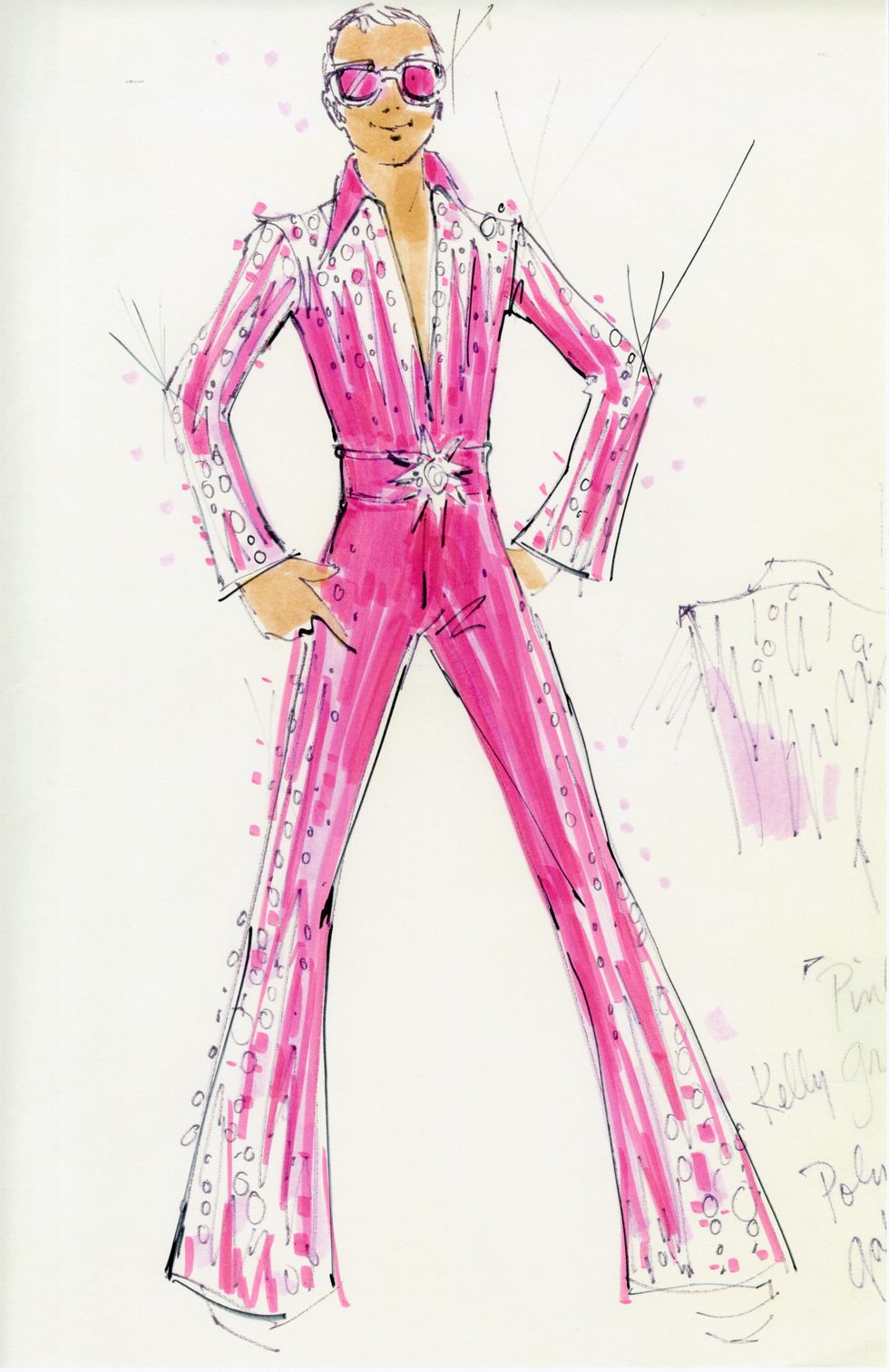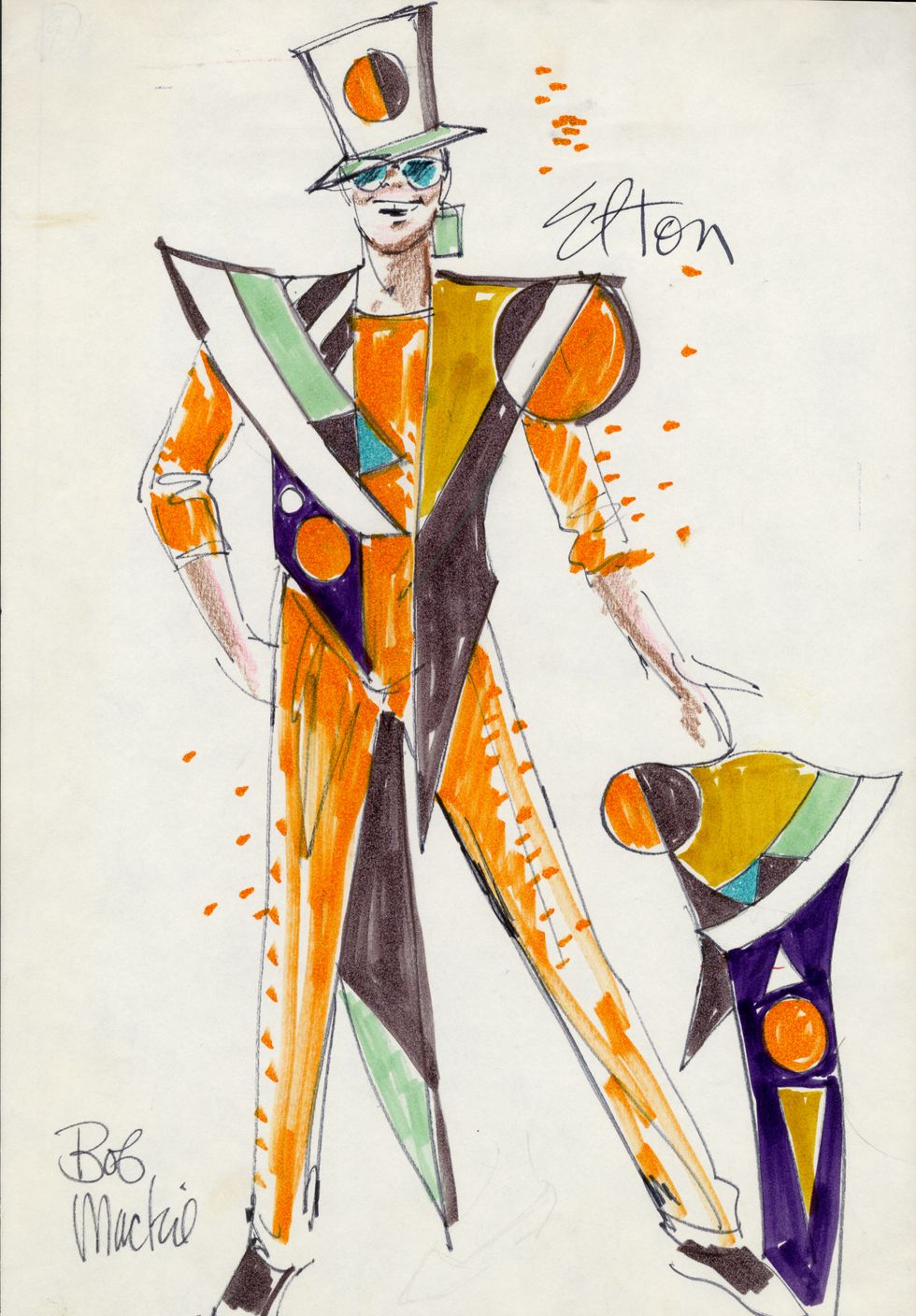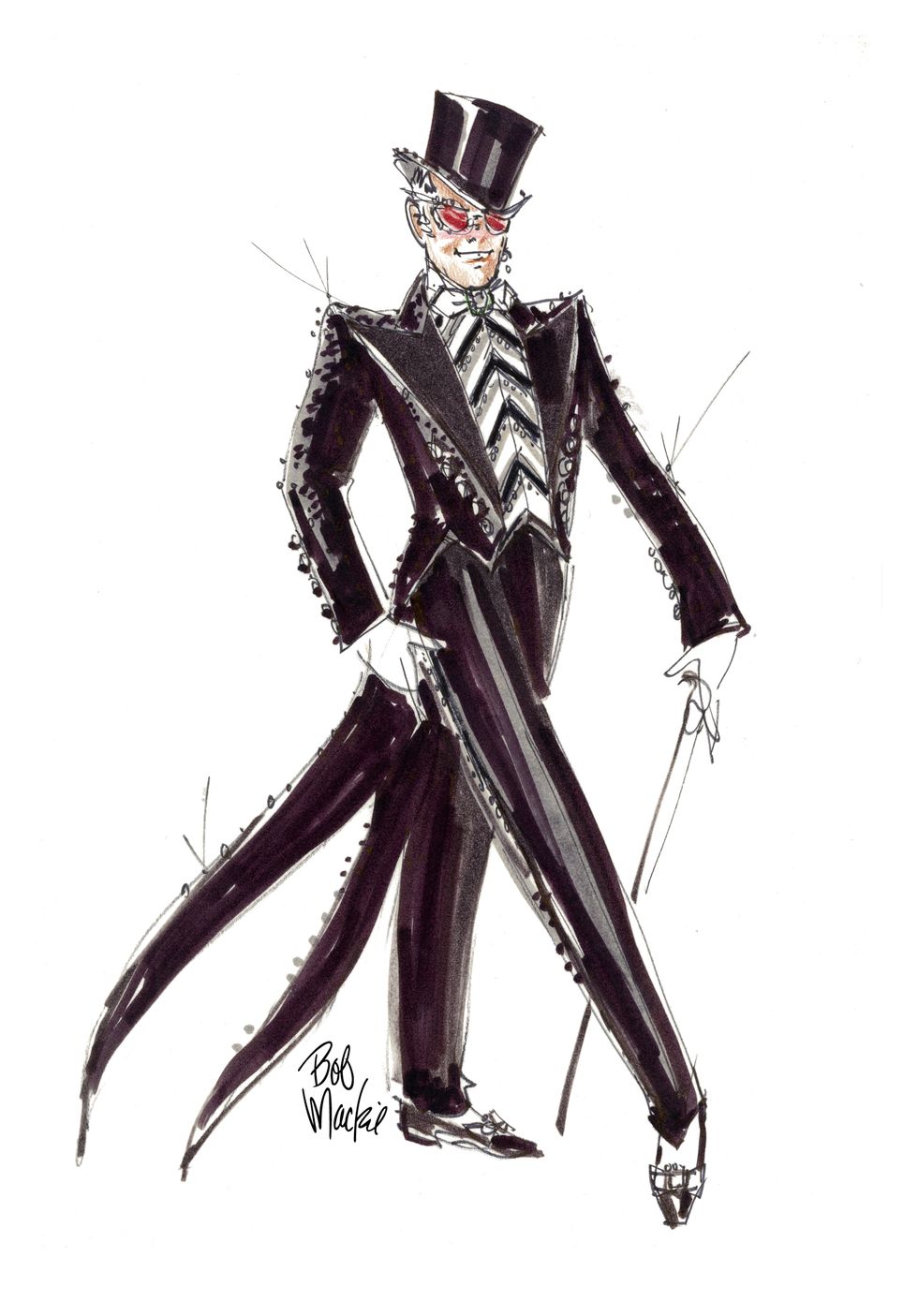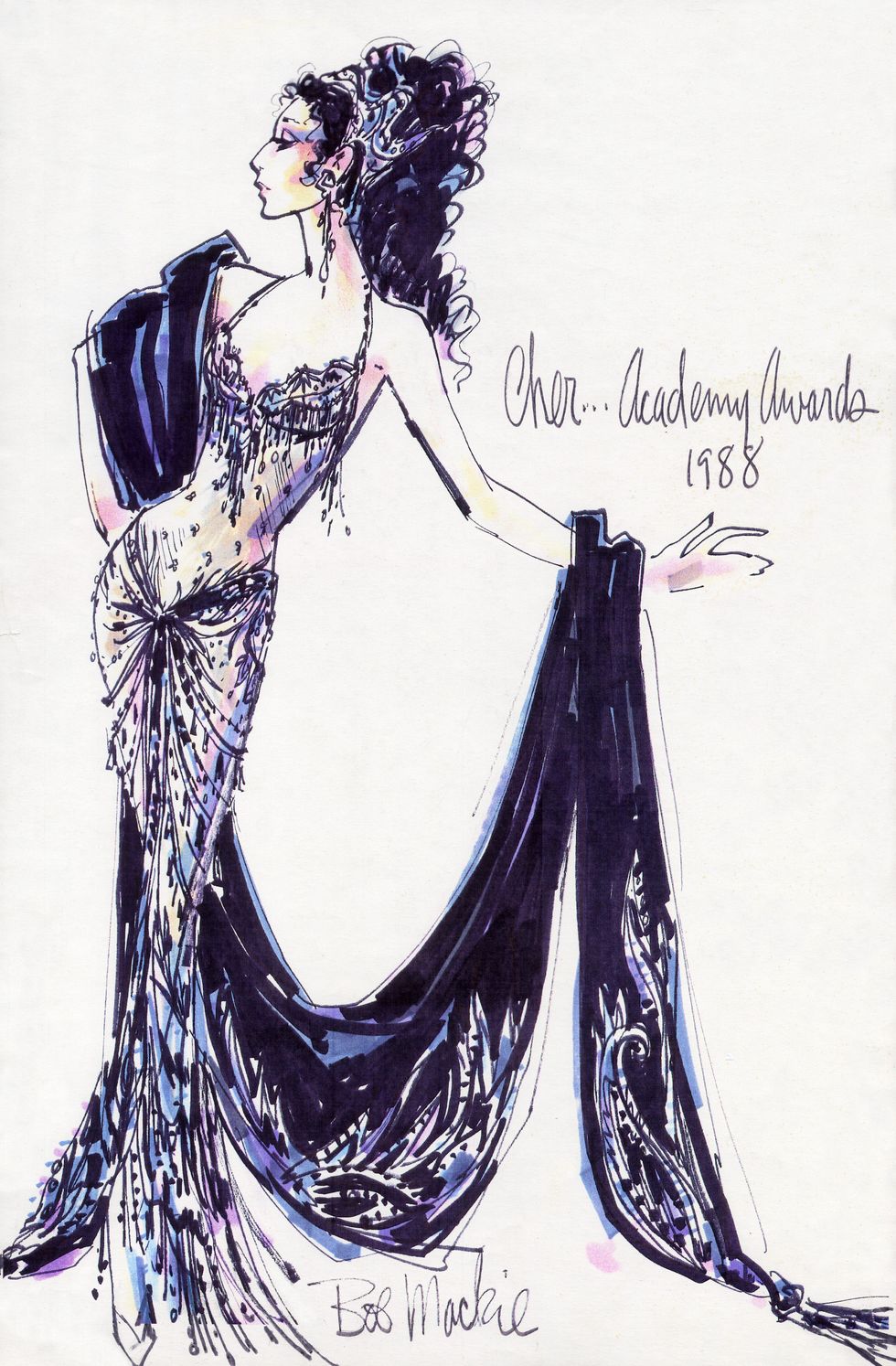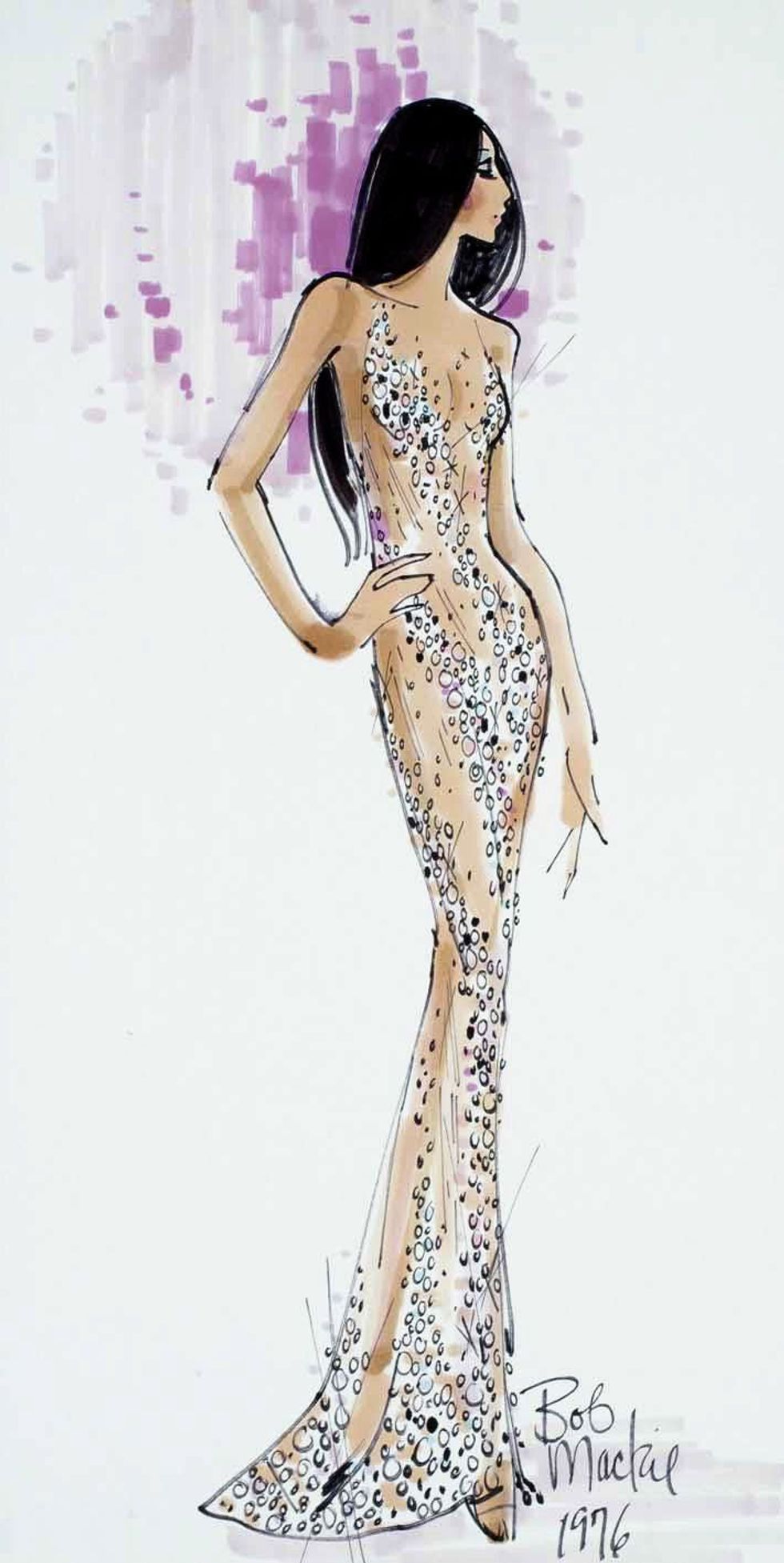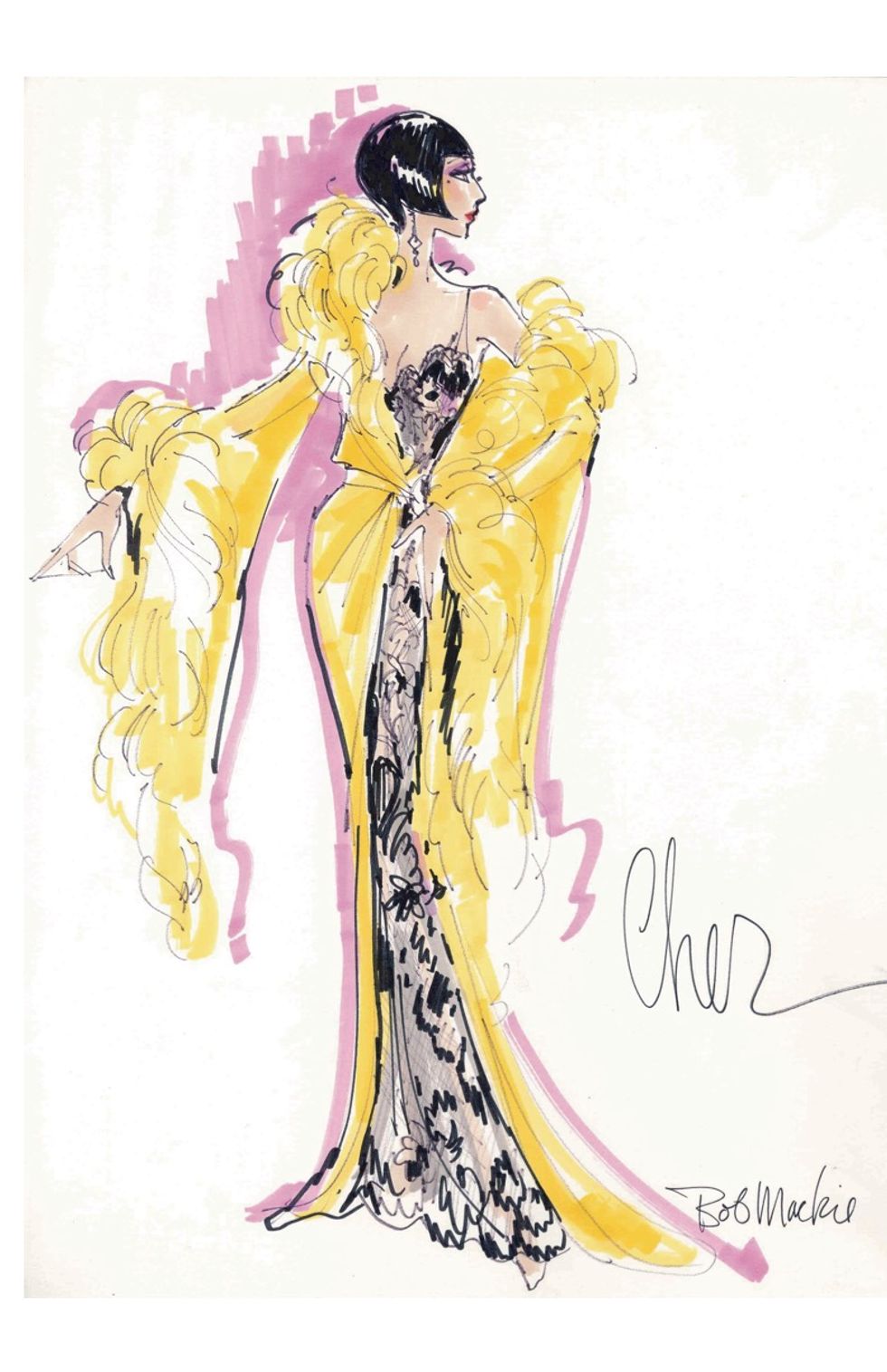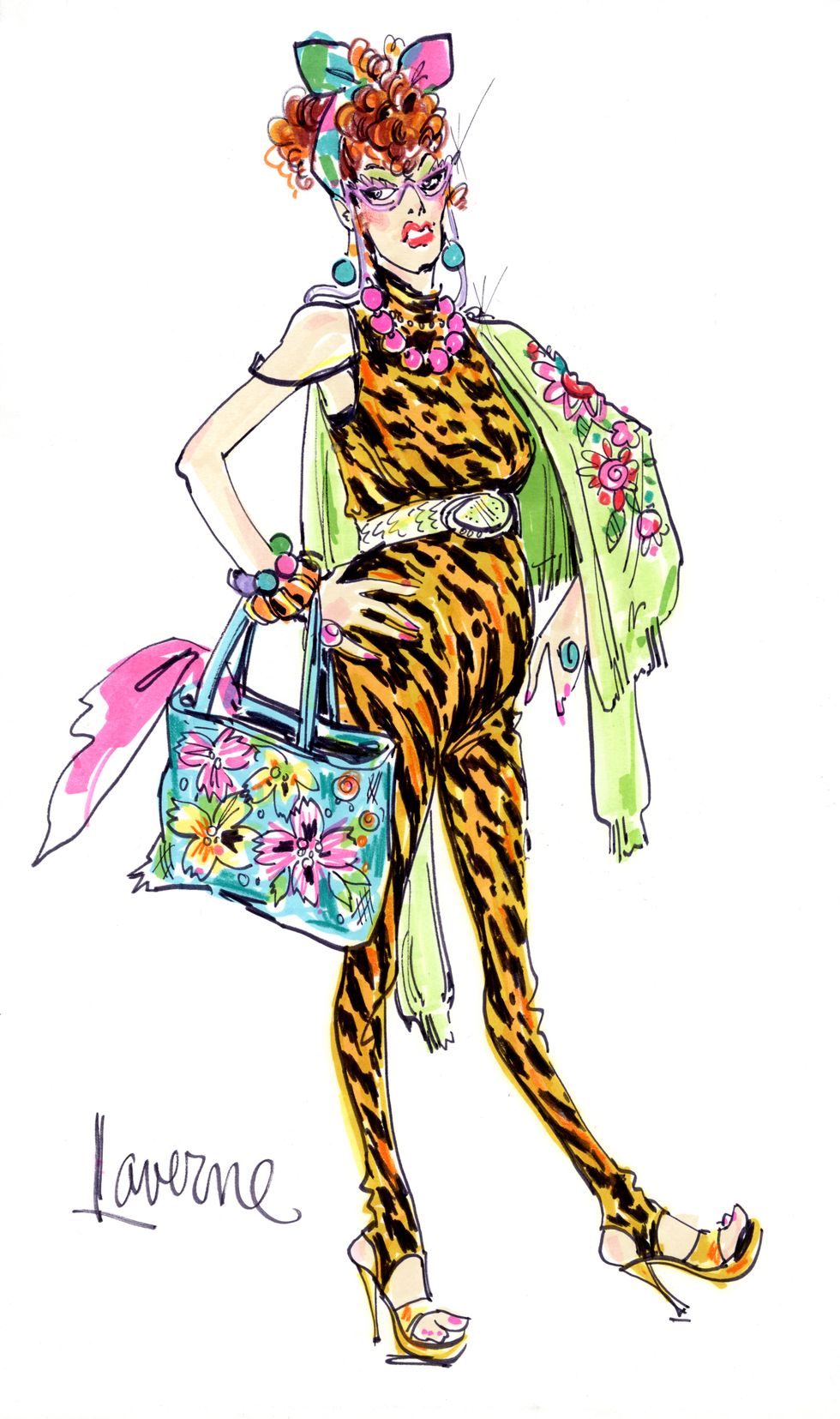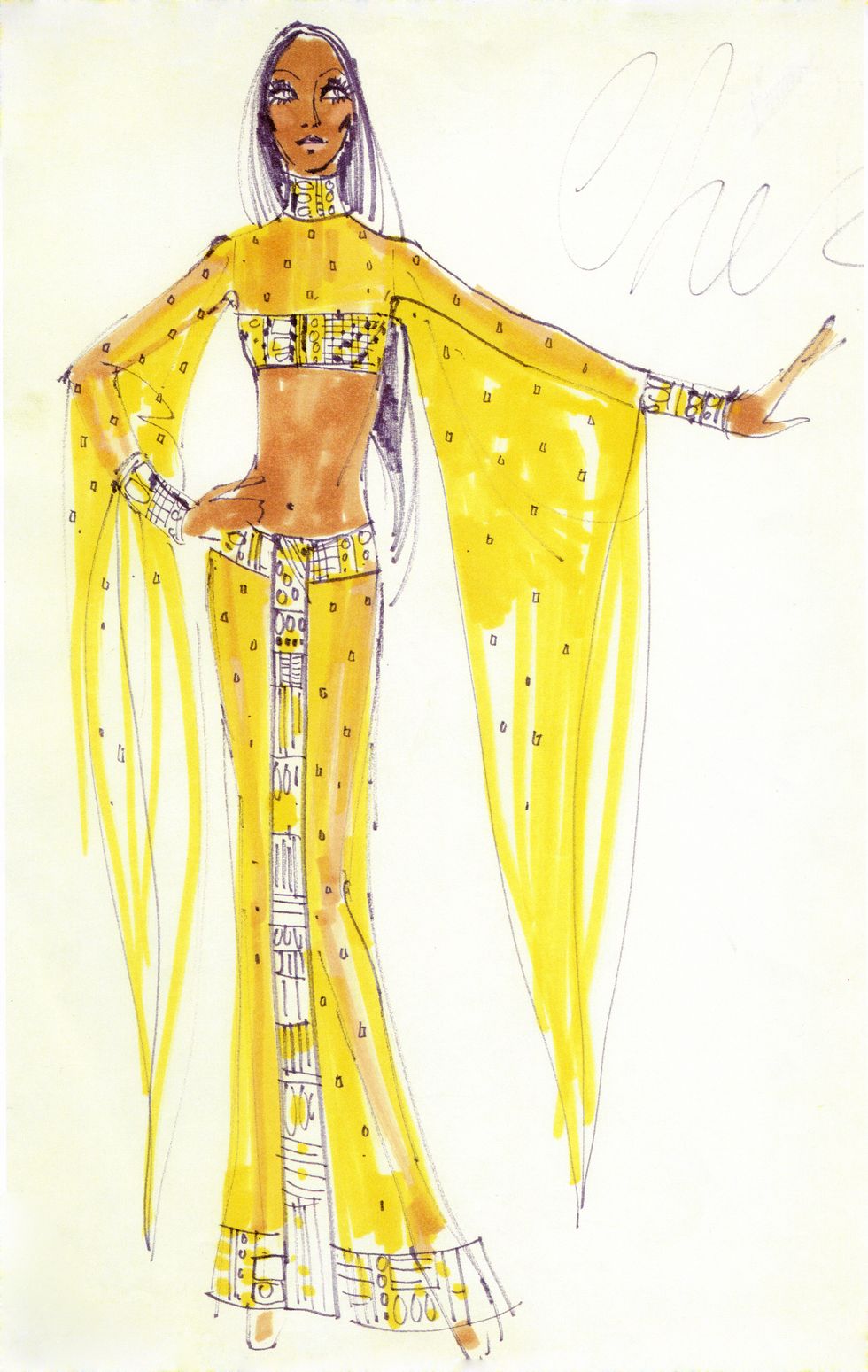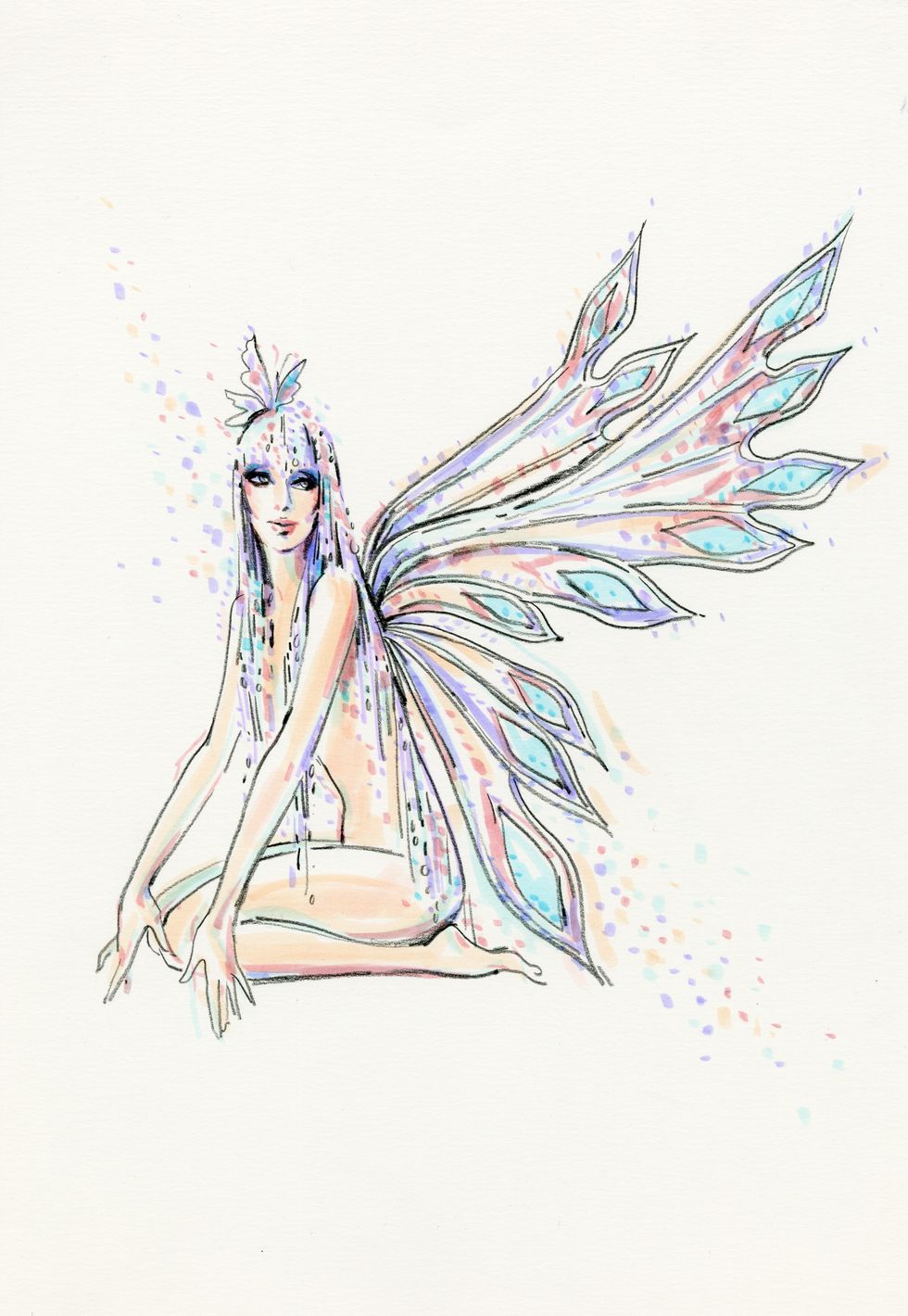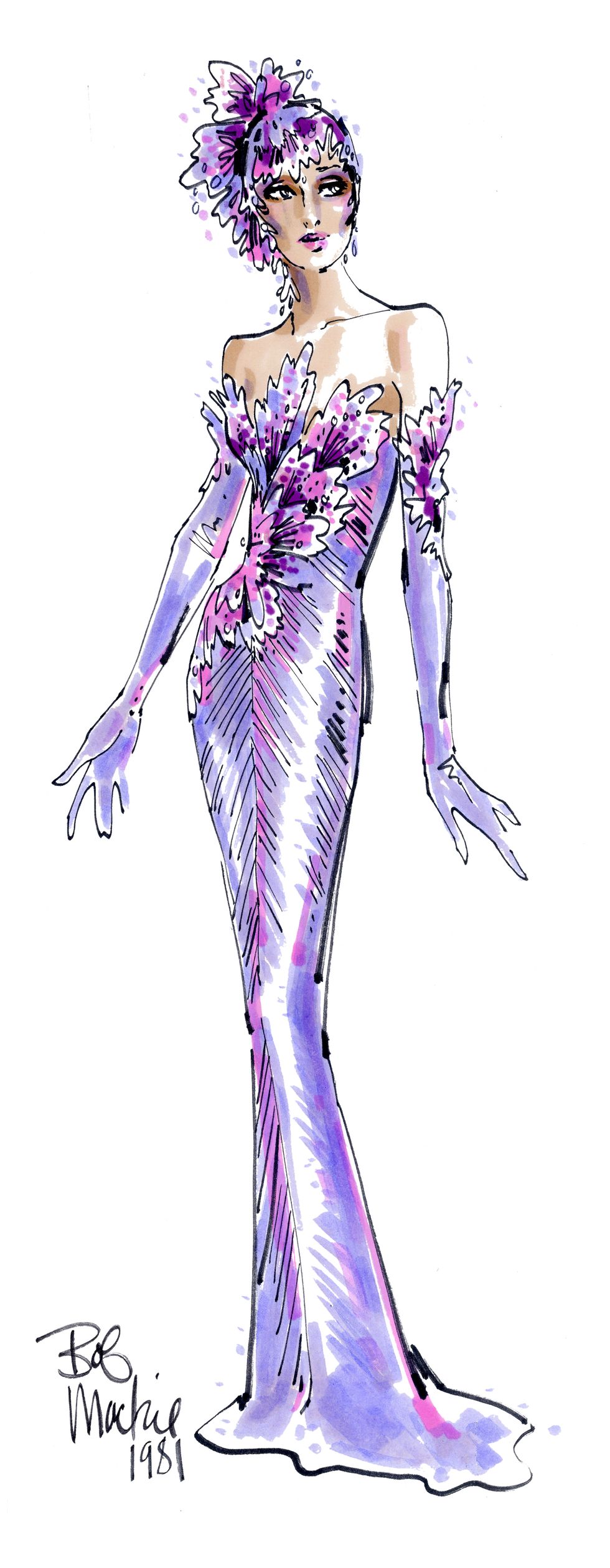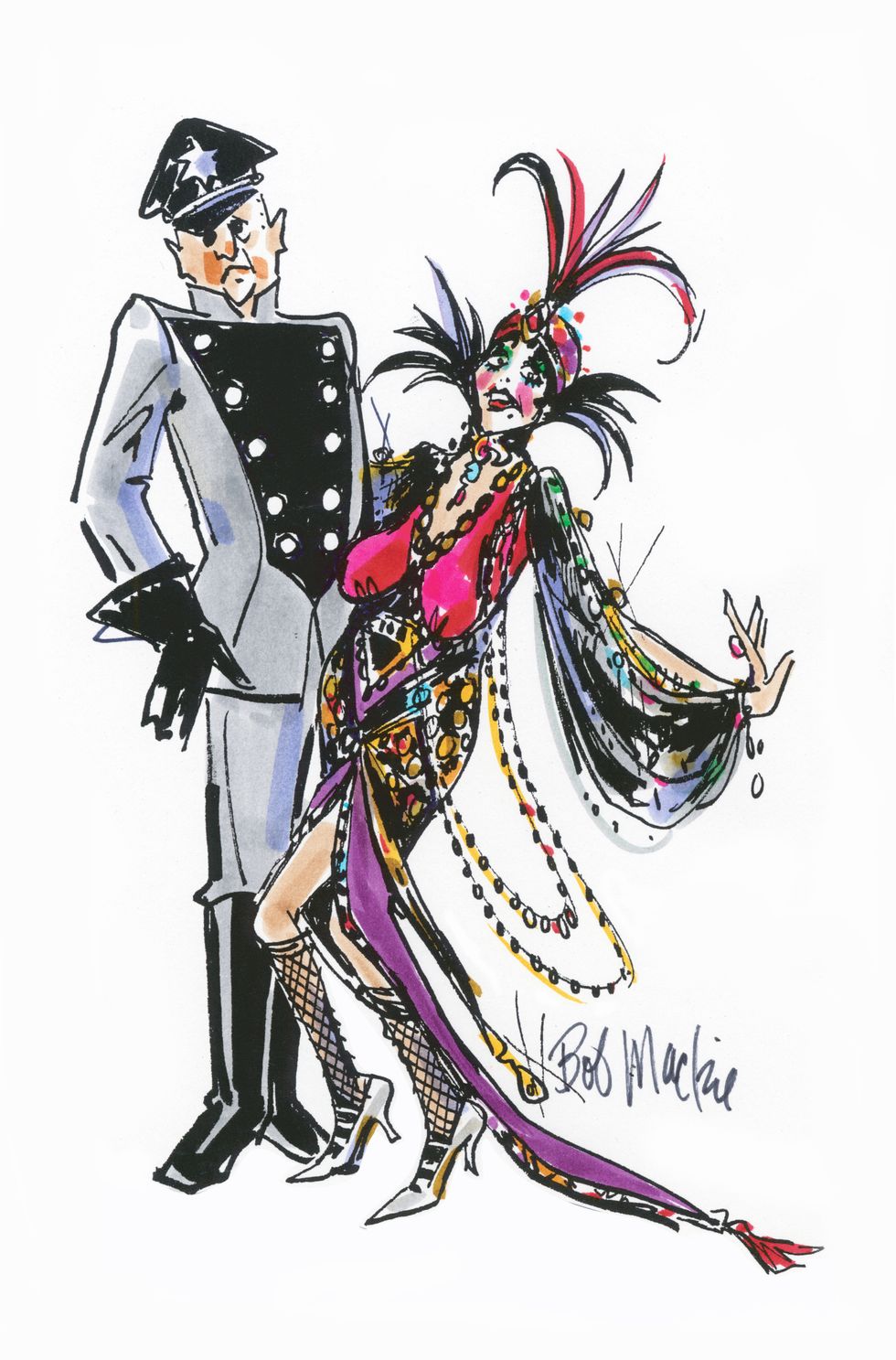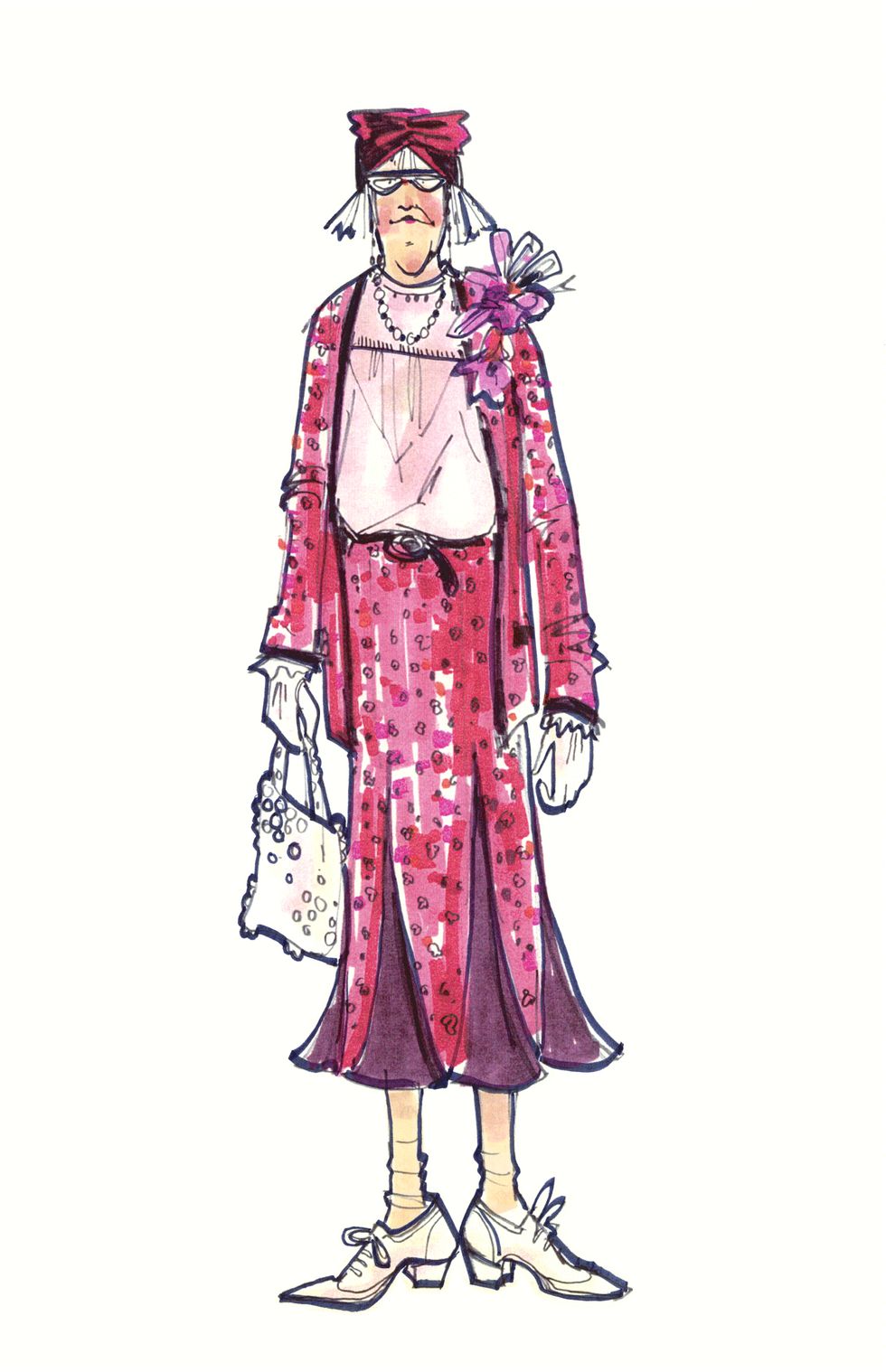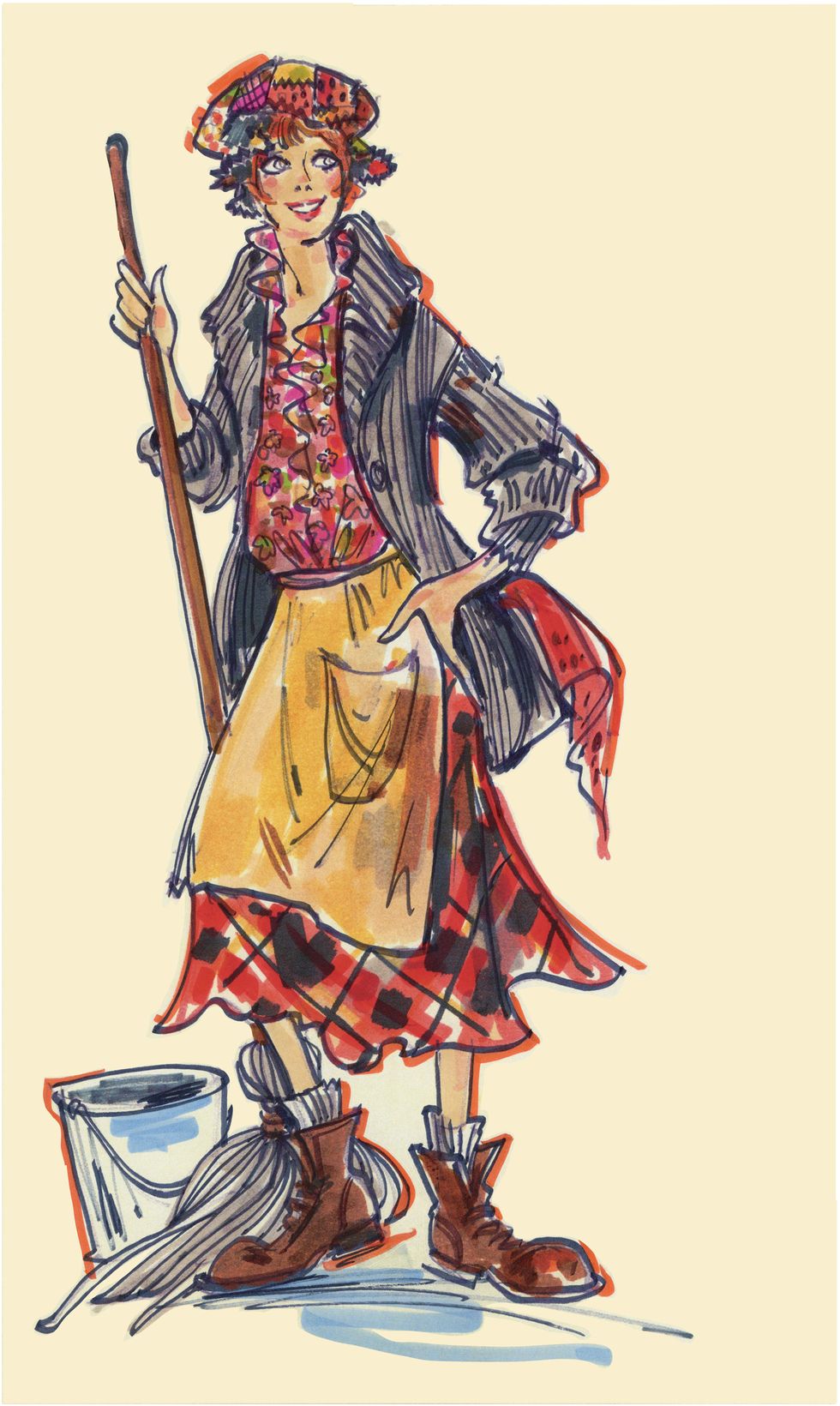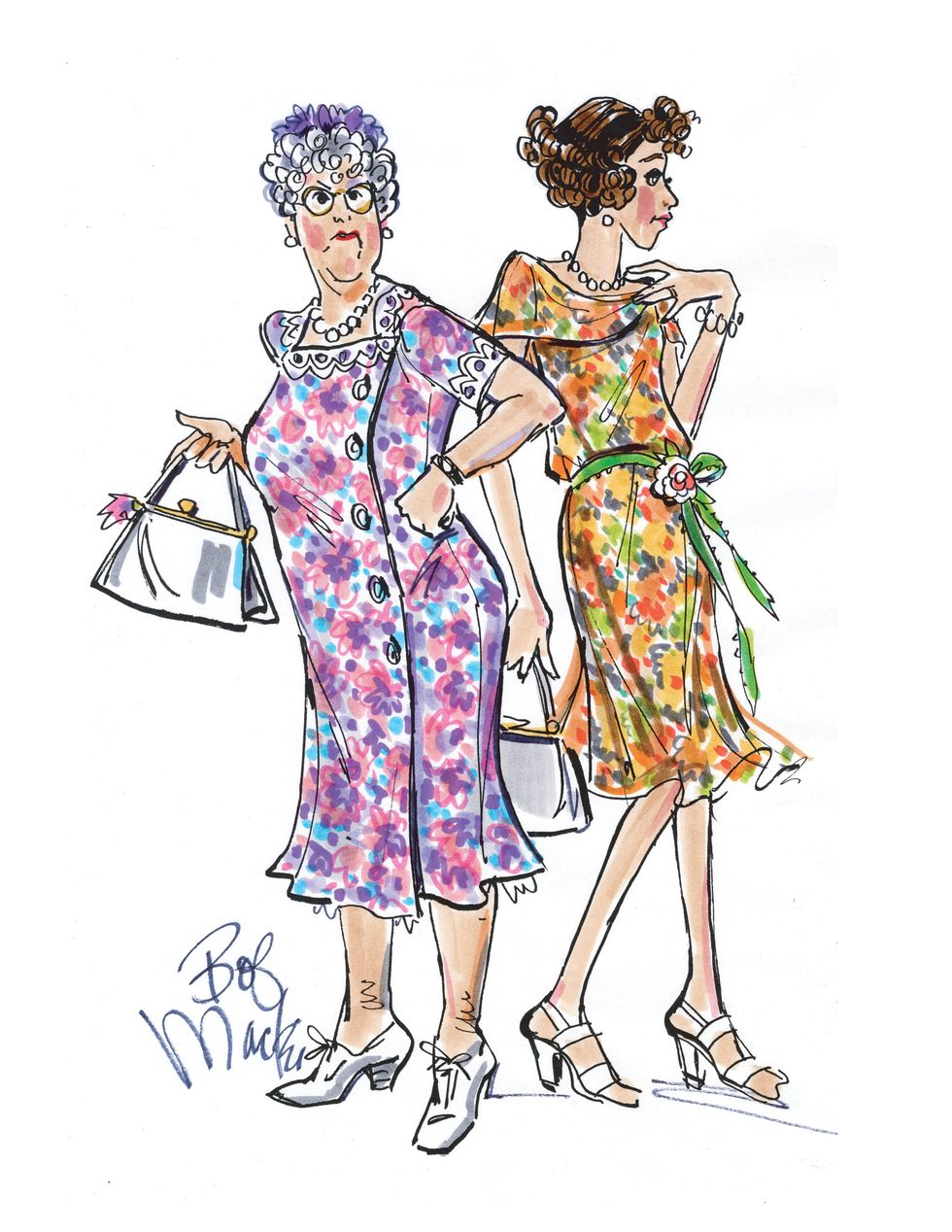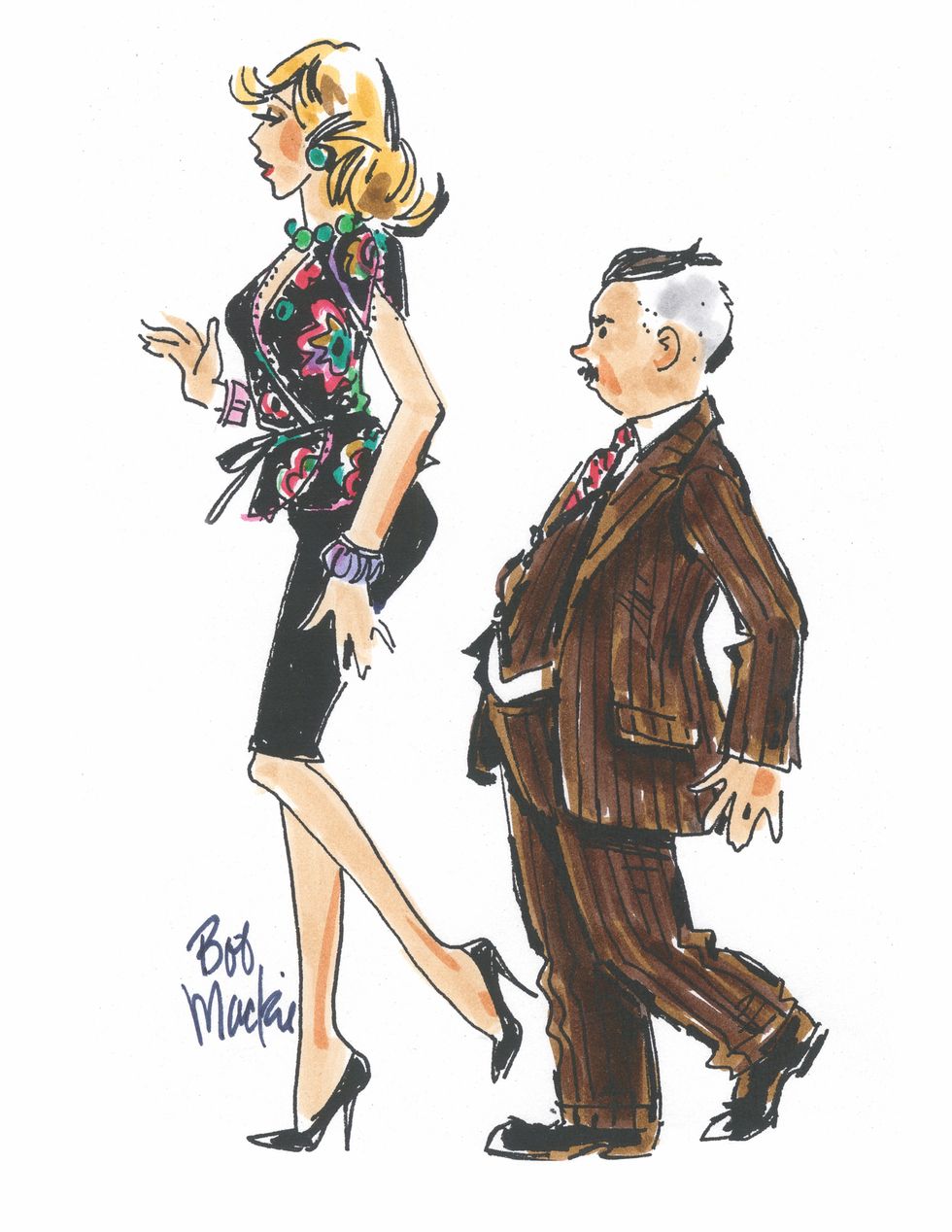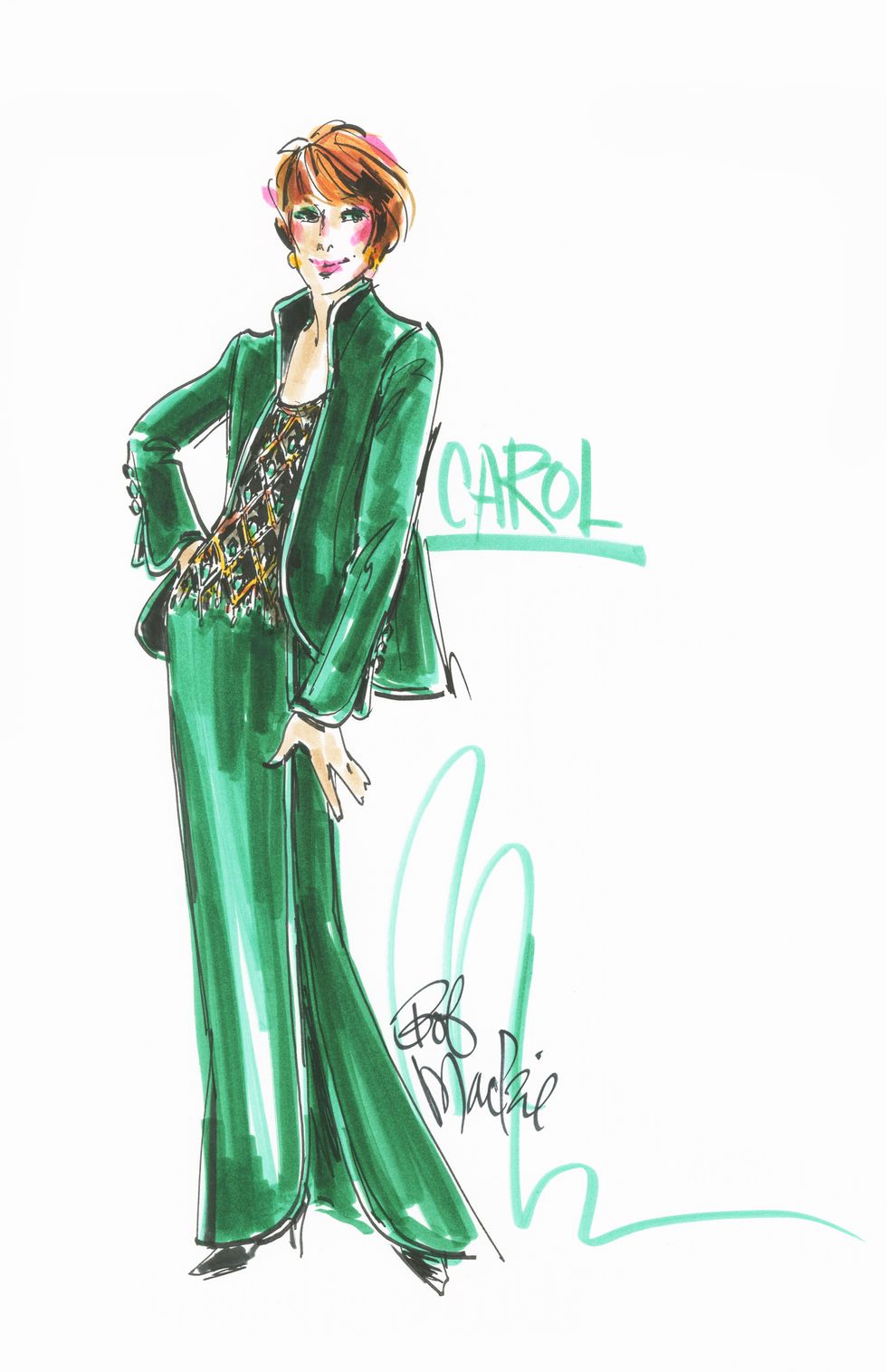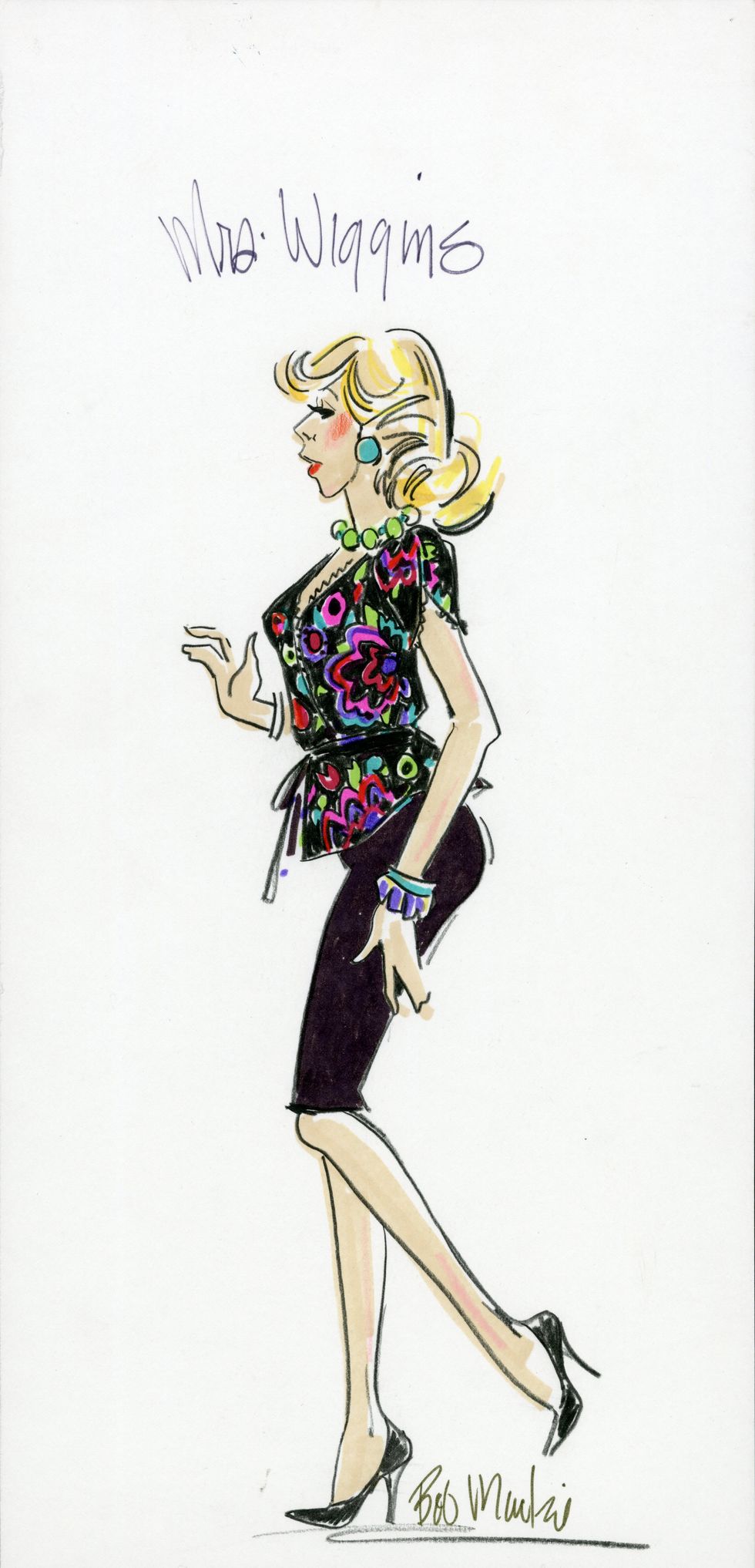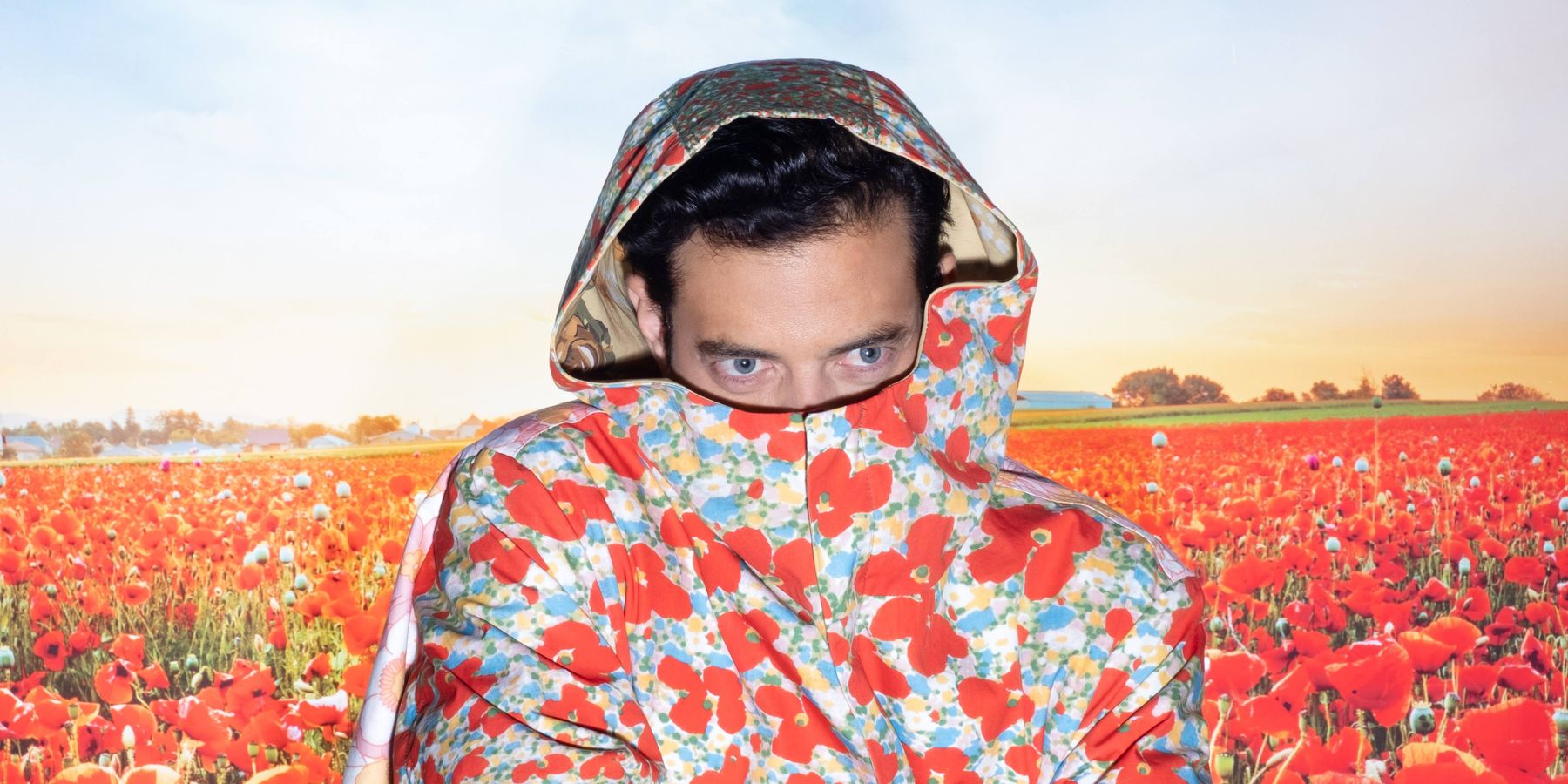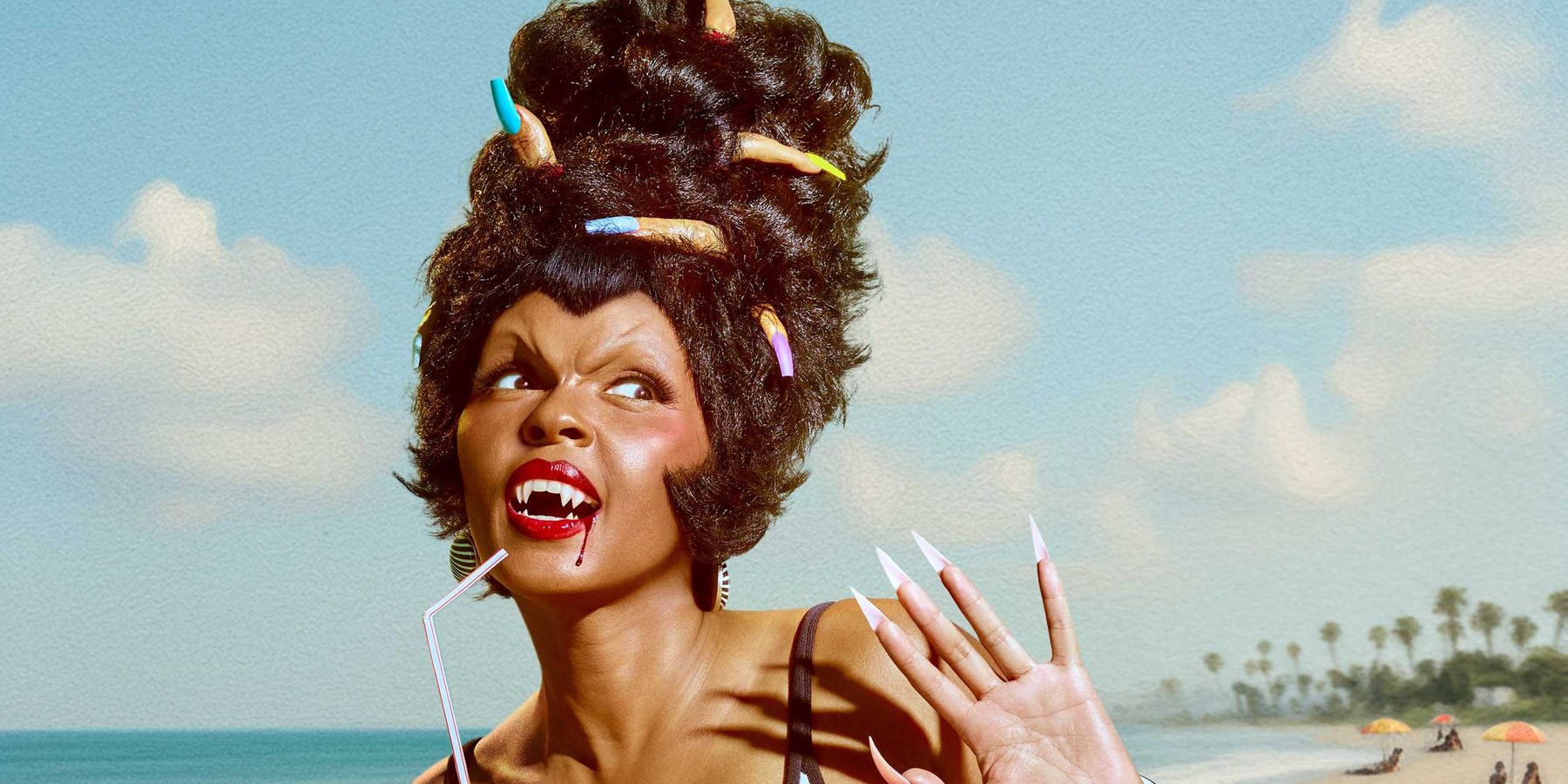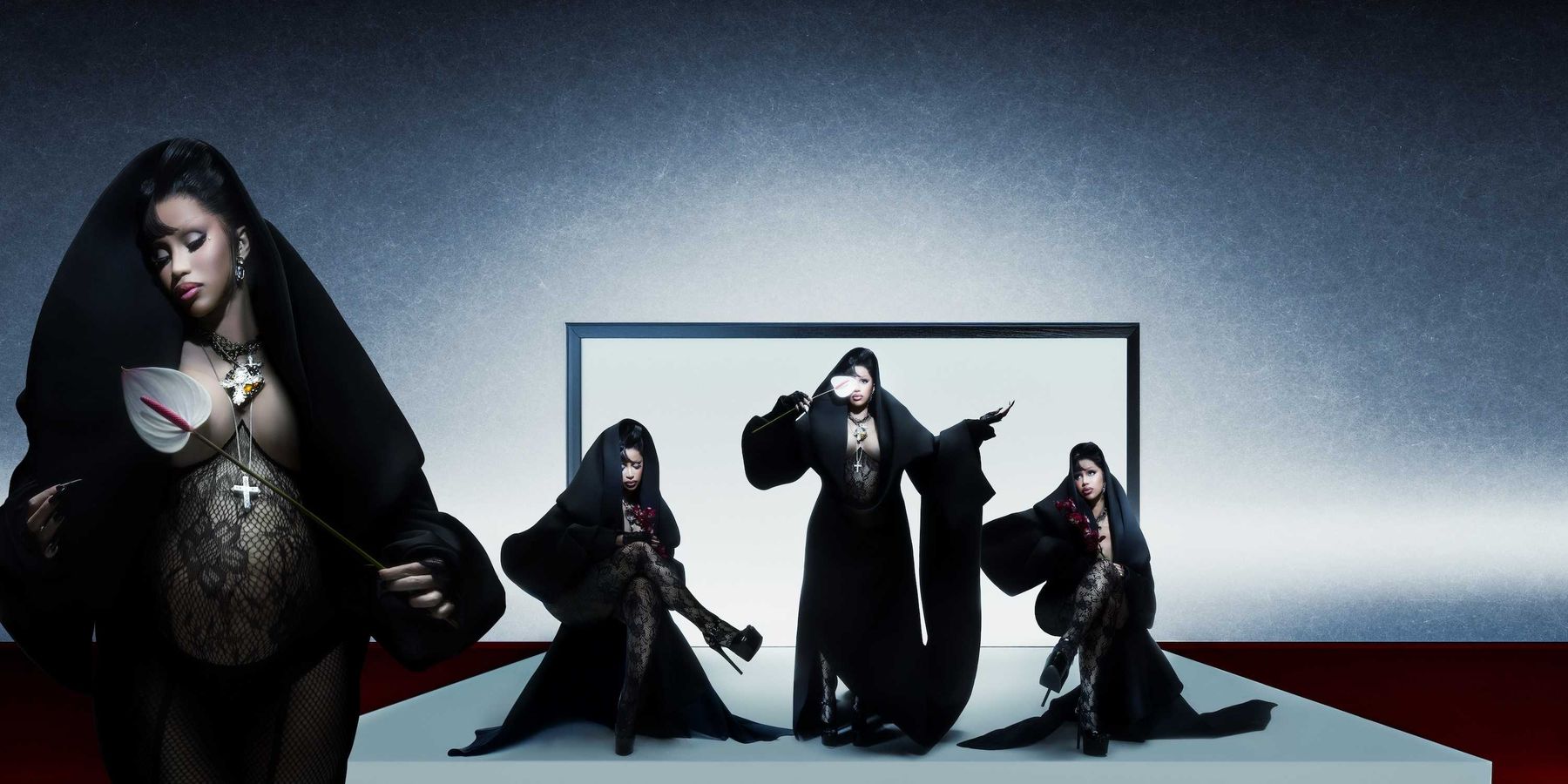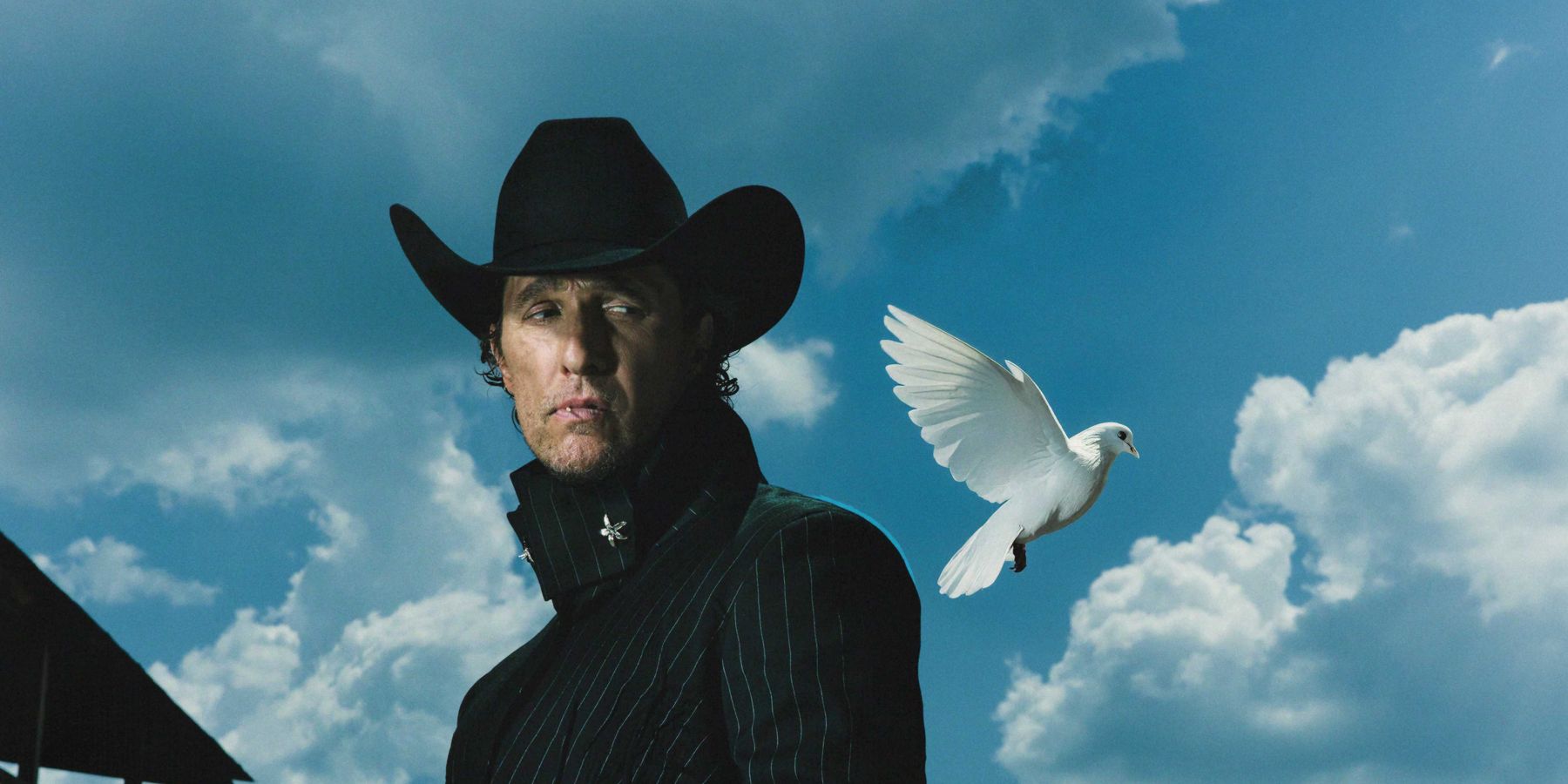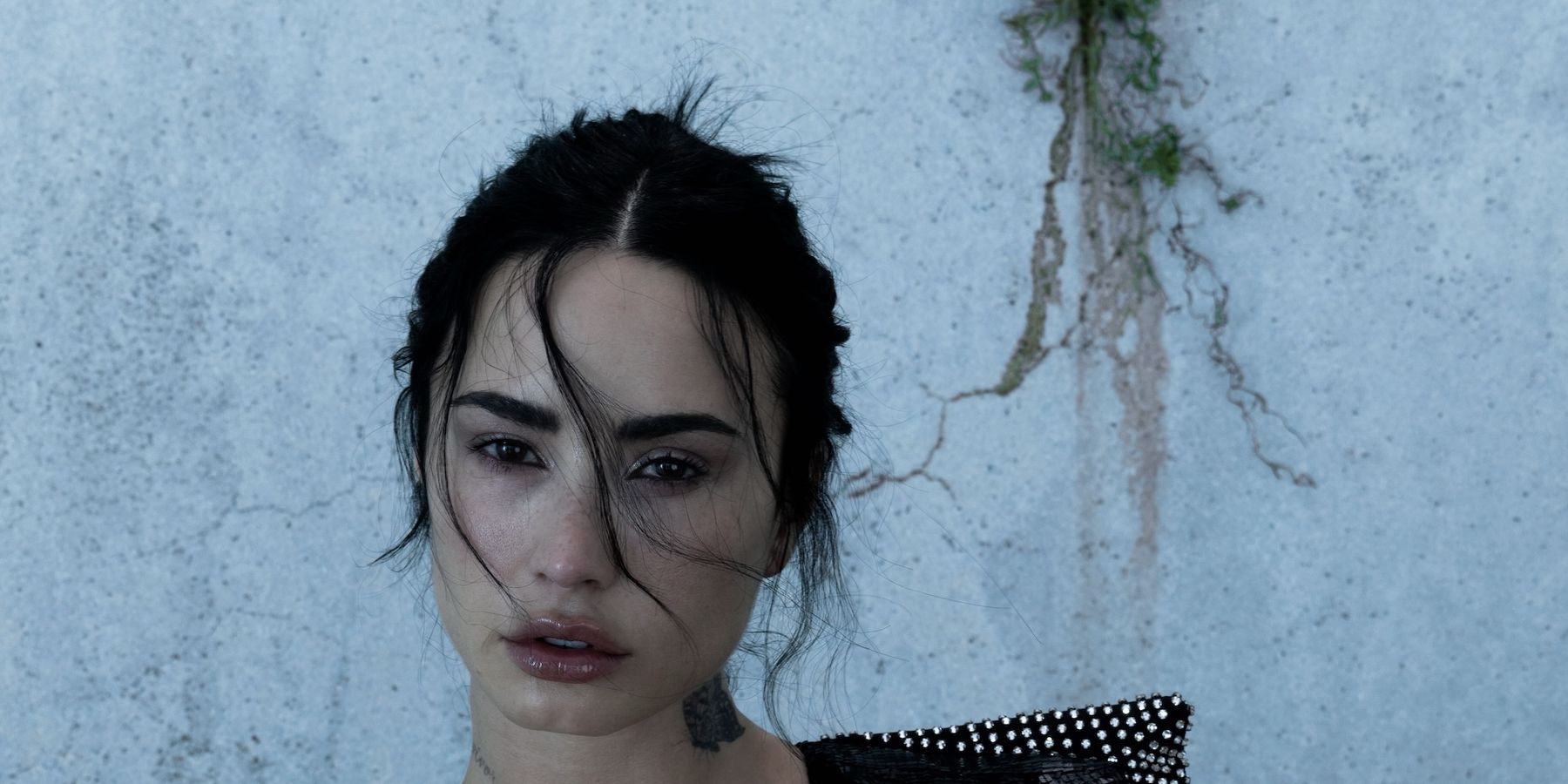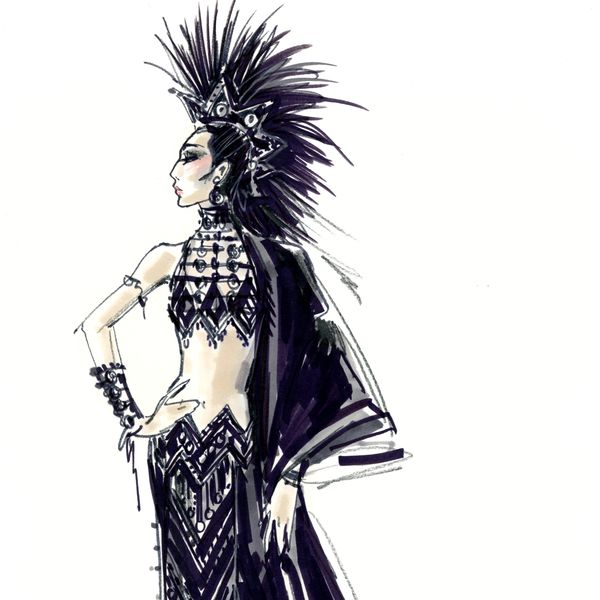
Bob Mackie Is Immortalized in New Documentary
Mar 06, 2025
There is maybe no other costume designer more legendary than Bob Mackie, and the recent documentary Bob Mackie: Naked Illusion showcases the six-decade career of his work and even his personal life, like his upbringing, his relationships with his star-studded inner circle and in his private family life.
For the first time, viewers get a glimpse into the full Bob Mackie archive, with all of its rare and unseen gems, and the outfits that didn't make the cut in the end. The documentary features original interviews with Mackie’s clients, collaborators and the many designers, stylists, comedians and actors that he’s inspired. Mackie himself also shares stories behind some of his most famous looks, from the Carol Burnett Show’s Starlett O’Hara dress to Cher’s feathered headdress at the 1986 Oscars and Tina Turner’s stage costumes.
With interviews from Cher, Pink, Tom Ford, Miley Cyrus, RuPaul, Carol Burnett and more, the film is the true tribute to the designer's historic legacy in fashion and costume design. New Yorkers were treated to a special screening and Q&A at The Roxy Cinema, but Bob Mackie: Naked Illusion is also available now on Prime Video.
Below, PAPER chatted with Mackie about opening up about his private life for the first time, his most treasured memories working with Carol Burnett and Cher, and how costume design has changed today.
How does it feel to be revisiting your career in a documentary like this?
Well, it's kind of funny when somebody else is in charge, like Matthew Miele. He's a wonderful director, but there are things that we left out completely. We tell a lot of stories, but when you watch it, there's not even an ounce of fashion show footage at all with models and all of that, just performers wearing it. I kind of missed that. I like doing those.
Were you able to tell some stories that you hadn't been able to tell before?
I was always just worried about getting the work done, and people didn't realize I'd been married before and that I'd had a son — all of that sort of thing. It never came up. And it's interesting to see how that changes your audience for a moment. They become very nostalgic and sweet and very lovely afterwards. I didn't spend time telling people about relatives and people that mean a lot to me, but it's none of their business, really, when you think about it.
Why open up about your personal life now after all this time?
Matthew [Miele] wanted to know about it. When you lose a child, it's very hard. It's very depressing, and you have to deal with that in your life. You don't just go around talking about it. Some people might, but I didn't. And yet, it was very special for me, and people that know me know that it was.
As an audience, we see your work for the big cultural moments that they are, but for you, do you remember things that were happening in your own life at each of those times?
That was constant: the making of costumes and making things to create a character, create a look. I think of the music that was being used at that point in time. Cher had, at one point, all those hit songs, one after another, written just for her, and then we dressed her for that: “Gypsies, Tramps and Thieves” and “Half Breed” and all those crazy songs. They were fun, and the audience loved it. So it just all became like one big package, really.
How have you been able to stay true to what you want to make, while also working with so many icons with their own creative visions?
When I first got The Carol Burnett Show, I thought, This is a gift from God. It's exactly the kind of show that I loved watching as a kid. Whether it was Carl Reiner, Sid Caesar or Imogene Coca, all those people had these big variety shows in the ‘50s. I was selling newspapers at the Hollywood Park Racetrack on a Saturday, and they had this big show that came direct from New York at five o’clock in the afternoon. Of course, in New York, it was eight o'clock, and it was a 60-minute variety show every Saturday night. I thought, I have to watch this. This is important. I need to see what they're doing. They did all this amazing comedy written by these brilliant people. Just one after another they became more and more famous as they got older and matured into other shows and things.
From the time I was a little kid, probably 13 or 14, I was going to any movie that had color and music and beautiful women and handsome men, and they're all in show business and taking the train to New York so they could play The Palace and all this nonsense. But it was all about being working in show business. It had nothing to do with fashion, really. It influenced fashion, I think, because people paid attention. But that was never what I was after at that age.
Did you feel creatively free designing for show business?
Absolutely. Even as a little kid who loved knowing what everybody wore and knew one movie star from the other and their names, Carmen Moran and Betty Grable. I was literally 5 or 6 years old at that point, but I knew all their names. I had a teenage half sister who talked about movie stars all the time and had movie magazines. So it just went in one ear and stayed there for a while, and every now and then I'll see a movie on television, and I’ll go, “This is so familiar.” And then I think that I think I saw that when I was a little kid and now remembering.
How do you see costume and performance and show business changing? It feels like it’s always evolving so rapidly.
Every year, something different happens. Now I'm looking at these little Disney princesses that are just gloriously sexy and grown up. They started as little children on the Disney lot, and they know more about show business than anybody. They know lighting, they know makeup, they know what they want to wear, how they want to look, how they want to move. It's amazing. Where did they come from? They started out as little children, adorable, but then all of a sudden, they're grown up sexy ladies. And you go, Okay, well, you have to grow up eventually.
So do you think young performers now have more of a vision of the story they want to tell visually?
Eventually it comes to them, or they'll see pictures from the past, of costumes, and they think, Oh, I wish I could wear something like that. And that does change fashion in a way, because the minute they're seen looking a certain way, other ones are kind of copying the look, as well, and realizing, I could be that sex pot. Sabrina Carpenter is kind of doing that now. I didn't even know who she was. She had a dress of mine that was actually the exact copy of the dress that Madonna wore on the Academy Awards, and that was also on the cover of Vanity Fair way back. She said, “I need a dress when I'm doing the Dick Tracy song at the Academy Awards. The stylist at the time, this wonderful Italian lady, who was so flamboyant and fun, just said, “Call Mackie. He'll do it for you.” And she did, and she didn't say much. She just came in and ordered her dress and ended up being Michael Jackson's date for the night … some of the strangest photographs I've ever seen because they're an odd couple, you have to admit.
What sort of briefs are you given now from celebrities that are different from celebrities in past decades?
A little bit. It used to be that look that was pure Hollywood, pure glamour. And then I remember one year, all of a sudden, that the hippie generation came into view. All the girls, their hair would frizz down, and they wore sort of funny hippie looking, San Francisco looking outfits, and Raquel [Welch] did that. I did a whole gown for her, what she wanted, but then she noticed everything was changing, so she was wearing this sort of hippie costume with her hair braided and frizzed. I just thought, Well, whatever. If it works for her, It's fine with me. I don't care. I could do that.A big topic of conversation now is how much red carpets have changed. There's a whole trend now of wanting to reference past moments on red carpets, or pulling like archival pieces. What do you think about that?
My memory tells me that it looks a little like something I've done before. It just does. And even in the documentary, they show pictures of Cher and things that were current at that moment, and how other other glamour girls were wearing things that would be a little different, but obviously inspired by [me]. That was kind of interesting and flattering and at the same time kind of boring, really. Find your own look!
More than ever people are channeling an image or look that has already come before.
They think of what they wish that they were part of, and then they become part of it, I guess. The first time I ever dressed Cher in something kind of revealing, we started getting calls from other little movie starlets wanting the exact same thing. And I said, “I can't. This was for her. I'll do something for you, if you want, but I don't want to do the same exact thing.” And I never would do it, and they were always kind of pissed off at me because I wouldn't make them the same dresses. What do you want to wear? The same thing?
The only person that I ever did that for was Angie Dickinson, who was married to Burt Bacharach, who was Marlena Dietrich’s conductor on big tours all over the world. And she went along for the trip, and she said that once in a while, she would help Marlena get into her gown, like a dresser. But she was a big movie star at that point, and she wanted a dress. She said, “I'd like a dress that looks like Marlena would have worn it. And I said, “OK, I can do that. That'll be fun.” She had a beautiful figure and was blonde and tall and gorgeous, and it was fun to see her look like that. And she enjoyed it. All the old pictures of Burt and her out enjoying the parties, she looked like a real star.
How do you tailor your looks for each performer, especially when they aren't very sure about what they want?
Very often they don't know what really looks good on them. I always try to be very familiar with the way they walk, the way they sit, the little things that they do with their shoulder when looking over and things that they do automatically without even thinking about it. You have to think about what makes the audience say, “That looks like Ann Margaret. That looks like Mitzi Gaynor.” Or whoever it happens to be at the time. Nothing's worse than disappointing your audience. You just come on looking like you shopped at Kmart or something … you just can't do it that way. You have to be a little more special than that.
Have you had to adapt your approach and your process to fit today? Has it changed at all?
You have to really know who that person is and what they look like and how they react and how they move and how they sell the song or whatever they're doing. And very often, a good stylist can turn your whole life around. The good ones are (I'm not mentioning any names) really good. They're dressing this gorgeous creature, and they put the right thing on them. It's amazing.
Was there a specific moment when you were like, Wow, this stylist really did a good job?
Just in the last two years alone with Zendaya, Miley [Cyrus] and Sabrina Carpenter, without those stylists, we wouldn't have had that connection to even begin putting my clothes on those three stars. [Their stylists] just have a sense of the drama that they're supposed to have to do that job.
What relationships have you made through your career that you're particularly grateful for and think about fondly?
Well, certainly Carol Burnett. Mitzi Gaynor was my first star client, and I'd been watching her since I was in grammar school in movies and dancing. She had so much humor about her and so much fun. To see her in the documentary in that fringe dress that she just kills. She moves beautifully, and she's having such a good time with herself. She just is the best. That's the real thing. When you see it, it really is amazing. When they're good performers, they can't help themselves. When they came out of the womb, those girls, they knew they wanted to sing and dance and be in show business. They just know it already, and they don't get over it either.
We lost Mitzi just a few weeks ago, and it makes me sad because she was such an important person to me. When Carol Burnett was starting her weekly variety show in Hollywood, she went to Vegas and was like eight months pregnant with her husband, and they saw Mitzi’s show. The choreographer, Ernie Flat, for Mitzi’s show said, “Take a look at those costumes. I think that boy would be good for you.” Meaning me. It was great. When people appreciate what you do, it's a wonderful feeling, really.
Photos courtesy of Bob Mackie
From Your Site Articles
Related Articles Around the Web
MORE ON PAPER
Entertainment
Rami Malek Is Certifiably Unserious
Story by Joan Summers / Photography by Adam Powell
Story by Joan Summers / Photography by Adam Powell
14 November
Music
Janelle Monáe, HalloQueen
Story by Ivan Guzman / Photography by Pol Kurucz/ Styling by Alexandra Mandelkorn/ Hair by Nikki Nelms/ Makeup by Sasha Glasser/ Nails by Juan Alvear/ Set design by Krystall Schott
Story by Ivan Guzman / Photography by Pol Kurucz/ Styling by Alexandra Mandelkorn/ Hair by Nikki Nelms/ Makeup by Sasha Glasser/ Nails by Juan Alvear/ Set design by Krystall Schott
27 October
Music
You Don’t Move Cardi B
Story by Erica Campbell / Photography by Jora Frantzis / Styling by Kollin Carter/ Hair by Tokyo Stylez/ Makeup by Erika LaPearl/ Nails by Coca Nguyen/ Set design by Allegra Peyton
Story by Erica Campbell / Photography by Jora Frantzis / Styling by Kollin Carter/ Hair by Tokyo Stylez/ Makeup by Erika LaPearl/ Nails by Coca Nguyen/ Set design by Allegra Peyton
14 October
Entertainment
Matthew McConaughey Found His Rhythm
Story by Joan Summers / Photography by Greg Swales / Styling by Angelina Cantu / Grooming by Kara Yoshimoto Bua
Story by Joan Summers / Photography by Greg Swales / Styling by Angelina Cantu / Grooming by Kara Yoshimoto Bua
30 September
Music
Demi Lovato Is No Joke
Story by Ivan Guzman / Photography by Jason Renaud / Styling by Chris Horan/ Makeup by Loftjet / Set design by Allegra Peyton
Story by Ivan Guzman / Photography by Jason Renaud / Styling by Chris Horan/ Makeup by Loftjet / Set design by Allegra Peyton
15 September
